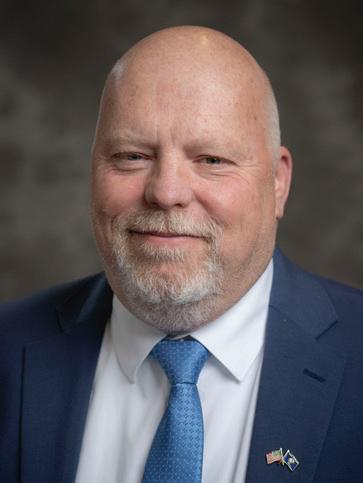Ruralite
DOUGLAS ELECTRIC
APRIL 2025

Extensive search leads to a book and a special designation Page 4 150 Years of Family Farm History

































APRIL 2025

Extensive search leads to a book and a special designation Page 4 150 Years of Family Farm History
































April 2025 • Volume 72, No. 4
CEO Michael Shepard
SENIOR VP OF CONTENT Leon Espinoza
EDITORIAL DIRECTOR Chasity Anderson, CCC
DEPUTY EDITORIAL DIRECTOR
Noble Sprayberry
SENIOR EDITOR Jennifer Paton, CCC
ASSISTANT EDITORS Victoria Hampton, CCC; David Herder, CCC; Sable Riley, CCC
ASSOCIATE EDITORS
Valeri Saldanha Rosa, Nina Todea
PUBLICATIONS PRODUCTION SR. MANAGER
Elizabeth Beatty
SENIOR PUBLICATIONS COORDINATOR
Alyssa McDougle
Ruralite (USPS 397-460) is published monthly for members for $5.43 per year, plus postage, by Pioneer Utility Resources Inc., 5625 NE Elam Young Pkwy. Ste. 100, Hillsboro, OR 97124—a not-for-profit Oregon cooperative corporation—to serve the communication needs of 46 consumer-owned electric utilities in Oregon, Washington, Alaska, Idaho, Nevada and California. Preferred periodical postage paid at Hillsboro, Oregon, 97123 and additional mailing offices. © 2025 Pioneer Utility Resources. All rights reserved. Reproduction in whole or in part without written permission is prohibited.
Postmaster Send address changes to Ruralite, 5625 NE Elam Young Pkwy. Ste. 100, Hillsboro, OR 97124-6454
HOW TO CONTACT RURALITE
Subscription services:
Nonmember subscriptions $15 (U.S.) per year; $25 per year (foreign). Prepayment required.
Allow 4-8 weeks for first issue. Be sure to identify which local edition you want to receive.
Address Changes:
Utility members, contact your local utility. Subscribers, call us at 503-357-2105 option 3 or email mailingdept@pioneer.coop.
Back issues:
Back issues and extra copies $3. Prepayment required. Supply is limited. Be sure to identify edition, month and year. Call first if ordering back issues to check availability.
To contact Ruralite: Ruralite magazine is published by Pioneer Utility Resources.
P.O. Box 1306, North Plains, OR 97133-1306; 503-357-2105; email: info@pioneer.coop. For more information, visit www.pioneer.coop.
DISPLAY ADVERTISING INQUIRIES
American MainStreet Publications
611 S. Congress Ave., Ste. 504 Austin, TX 78704
800-626-1181 or 512-441-5200
Flipping through our April edition, I’m struck by the sheer amount of “doing” happening in our communities.
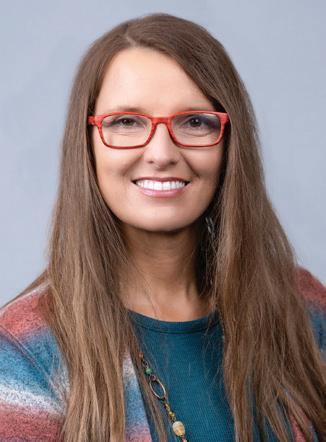
Our Easter Sunday dinner feature isn’t just about food—it’s a practical approach to creating a memorable meal without unnecessary fuss. These recipes are straightforward and delicious, which is why they deserve a spot on your table this month.
The Sisters Outdoor Quilt Show, now marking its 50th anniversary, demonstrates how practical skills can transform into community events with a real economic impact. What began as a teaching necessity has evolved into an annual celebration that brings $1.7 million to a smalltown’s economy. That’s not just tradition. That’s impressive community development.
Speaking of action, our “Beyond Barriers” feature highlights organizations tackling accessibility head-on. These aren’t just feel-good stories—they’re examples of problem-solving at its finest. When faced with the challenge of making outdoor recreation accessible, groups like Oregon Adaptive Sports and David’s Chair didn’t just talk about inclusion—they engineered solutions with tangible results. As David’s Chair
Founder Steve Furst puts it, they “fumbled through” and figured it out.
Even Dave LaBelle’s piece on rainbow photography offers practical advice: Keep your camera ready as storms clear, use interesting foregrounds and be prepared to capture fleeting moments.
What ties these stories together is action— people identifying gaps and taking steps to address them. From Jean Wells opening a quilt shop because her students lacked materials to Bill Greenwood developing accessible water entry points after hearing about someone struggling, our communities are full of doers.
As you read this month’s issue, I hope you are inspired not just to appreciate these stories but to look around your own community. Where are the gaps you might help fill? What practical skills could you share? Sometimes, the most meaningful contributions start with acknowledging we can do better and then asking, “What’s a solution?”
Do you know any stories of “doing” you think should be showcased on the pages of Ruralite? I’d love to learn more. Reach me at editor@pioneer.coop.

For supplemental and interactive content, search @Ruralite on your favorite social media sites.

Director
Until next time, Chasity Anderson Editorial
The Sisters Outdoor Quilt Show marks 50 years Up Close, Page 10
Innovative organizations make the great outdoors accessible to all Spotlight, Page 12
In The Kitchen, Page 16
Extensive research leads to a book and a special designation
By Craig Reed
When Janet Fisher walks the hillsides of her property overlooking the Umpqua River, she imagines stepping into the footprints left by Martha Maupin.
Carisa Cegavske, Janet’s daughter, frequently has that same feeling because walking over the land has been a longtime family tradition.
On April 24, 1868, Martha A. Maupin took ownership of the 320-acre Shadrach Hudson donation land claim and began the tradition of walking the river bottom pasture and the timbered hillsides.
“This is where she took her stand,” Janet says of her great-great-grandmother Martha.
So many years later, Janet now lives in a hillside home, and Carisa, with husband Robin Loznak, lives in a home on the river valley floor.
“Living here is like walking in the footsteps of your ancestors,” Carisa says.




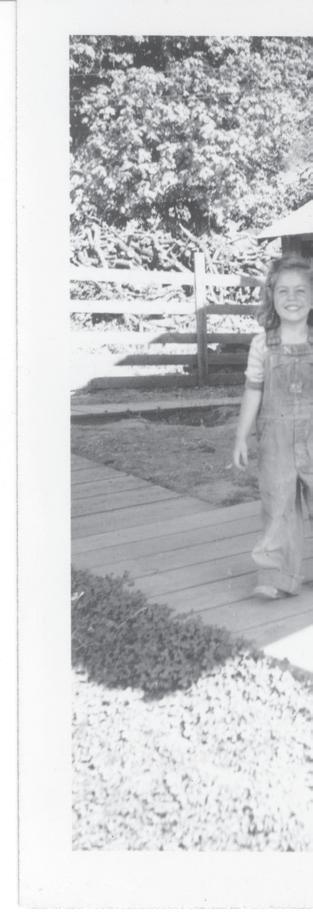

To recognize and honor Martha’s strength and the history of the family property, Janet has accomplished two goals. She researched, wrote and released in 2014, “A Place of Her Own: The Legacy of Oregon Pioneer Martha Poindexter Maupin,” a 240-page book detailing Martha’s life from her 1829 birth in Kentucky to her final days in 1909 along the Umpqua River.
In 2024, Janet’s research was used as she applied for certification of the Martha A. Maupin Sesquicentennial Farm, recognizing the property’s ownership in the same
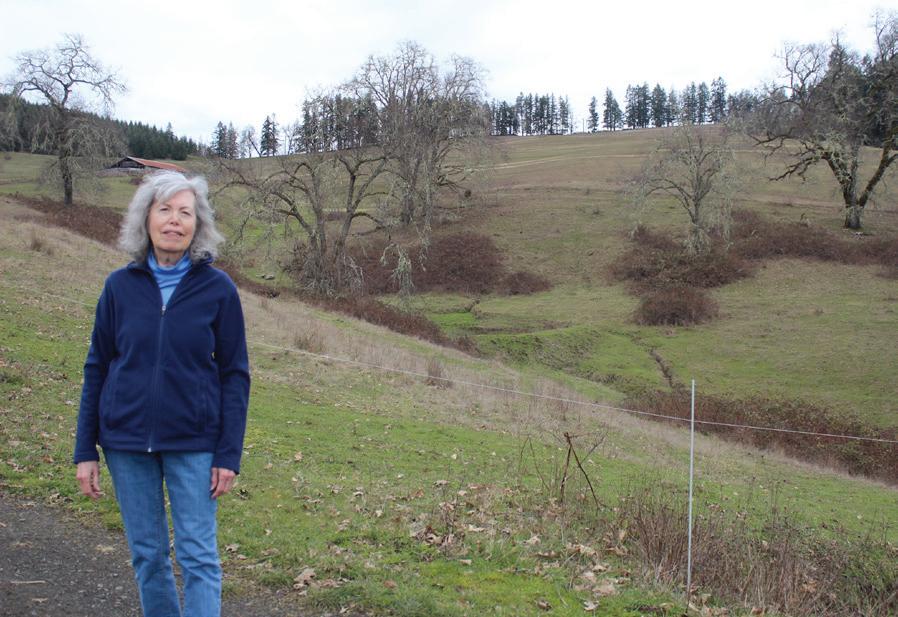
family for 150 years. The sesquicentennial designation was officially announced at a ceremony during the 2024 Oregon State
“It’s wonderful to be a part of that history,” Janet says.
“It’s amazing,” Carisa says. “Mom is right when she says we have deep roots here. To stand on this property and to know my great-great-great-grandmother also stood here is pretty amazing.”
According to Janet’s research, Martha grew up on a farm in Greene County, Illinois. At 15, Martha traveled with two of her brothers to Missouri. There she met Garrett Maupin. Against her parents’ wishes, they married on May 16, 1845. She was 16.
In 1850, with two young daughters and Martha pregnant with a third child, the




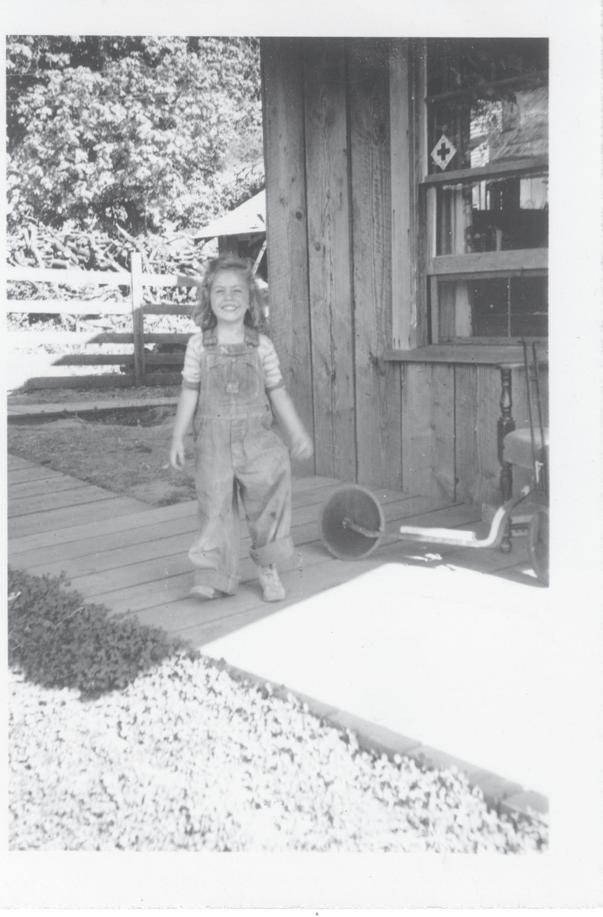
got a job hauling freight.
In 1866, while hauling a load, Garrett’s wagon tipped over, and he was smothered under bales of wool. Friends offered Martha and her nine children temporary lodging.
When she learned the nearby Shadrach Hudson land claim of 320 acres was for sale, she was interested but didn’t have the $1,000 needed to buy it. She learned of a man in Scottsburg who would lend the money, but he wouldn’t negotiate with a woman. So, Martha’s oldest son, Cap, 13 at the time, negotiated the $1,000 loan, and the property was purchased in April 1868 from H.M. Martin. Cap was too young to own property, so it was Martha’s.
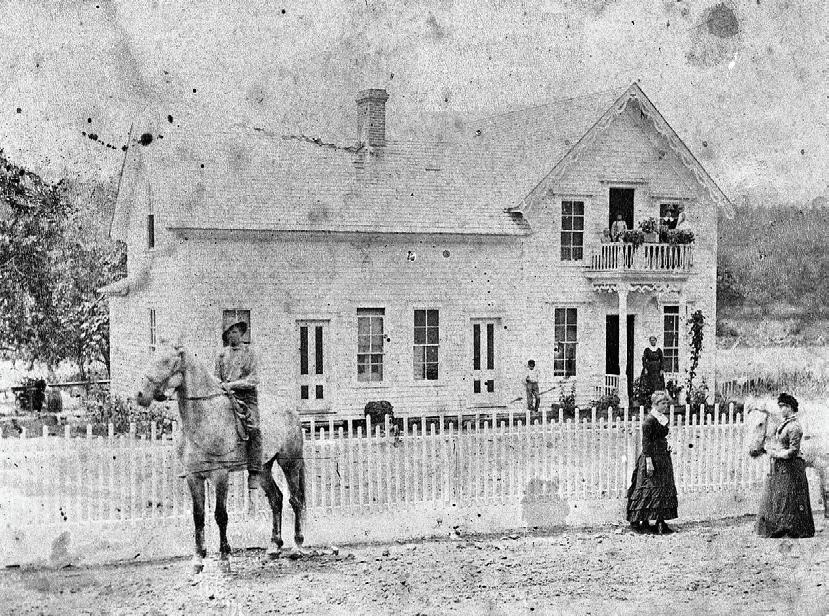

the couple’s third child was born.
In the spring of 1851, the couple took out a donation land claim in Lane County for 640 acres. They endured the next several years, surviving rough times in their marriage and in their community. Late in 1860, Martha sued Garrett for divorce but didn’t go through with it, probably because she would have lost her children. There were seven at the time, and in those days, Janet says, the children belonged to the father. Financial troubles forced the Maupins to give up half of their donation land claim. In 1864, Garrett, a staunch Southern sympathizer, got in the middle of the NorthSouth rivalry. Wanted by the law, Garrett and his family fled south to Douglas County, renting a cabin on a farm near Elkton. He worked on the farm to pay the rent and also
Eighteen years later, Martha sold the property to Cap and another grown son, Thomas. Cap became the sole owner of Martha’s original land when he and his brothers split up additional property they had purchased together.
Cap became the first farmer in Douglas County to grow hops and build a hops dryer. He planted the first prune orchard in 1895 and converted the dryer to work on
Martha died in 1909 at age 80 or 81, depending on the source.
Eugene Fisher, Cap’s great-nephew, was the farm’s next owner. Soon after graduating from Oregon State College in 1933, Eugene contracted with Cap to purchase the farm Martha founded. Cap died in 1934, and three years later, Eugene and his wife, Marian, completed payments on the contract for the farm.
Eugene turned out to be the longest owner/operator of the farm. During his 75-year stewardship, he expanded the prune orchard, automated the dryer facility, managed the timber as a crop and bought adjacent land.
He also found time for community service. Eugene served on school boards at every level from local to national.
President Dwight Eisenhower appointed
him to a special White House Conference on Education. Oregon Gov. Mark Hatfield appointed him to the Oregon State Board of Education. He also served on farm boards and is listed in the Oregon 4-H Hall of Fame. Twice, he was named Douglas County Tree Farmer of the Year.
In recognition of his community service, he was presented the Oregon State University Distinguished Service Award, one of the university’s highest honors.
Eugene died in 2007 at 95. Until becoming ill in 2006, he actively operated the farm with the help of his daughter, Janet. Upon completion of probate, Janet purchased her sister’s share of the property inheritance and became sole owner of the 641-acre farm.
For several years, the farm continued to harvest and dry prunes. It also dried prunes for other local growers. But when the price of oil used in the dryers spiked in 2011, the operation was shut down. For a few years, the farm’s prunes were transported to dryers in Northern Oregon, but due to a poor prune market, the farm’s older trees and a tree disease, most of the prune orchard was replaced with plantings of hazelnut trees.
To cover expenses, Janet sold 71 acres in 2014 and another 40 in 2018. The remaining 530 acres include Martha’s original 320 acres.
When Janet took ownership of the farm, she thought about the fact that a woman was the first in the family to own property and that another woman in the family now owns it. It led to her work on the book and sesquicentennial designation.
“I came back to the farm because it’s a gorgeous place and my roots are here,” Janet says. “I hope to remain agile enough for quite a few more years in order to manage the land.
“There’s no easy answer,” she adds of the farm’s future, noting that she has two daughters, Carisa and Christiane, and two adult grandchildren.
Somewhere in time, those generations will make the decisions regarding the family’s ties to the land along the Umpqua River. n
What does it take to become a lineworker?
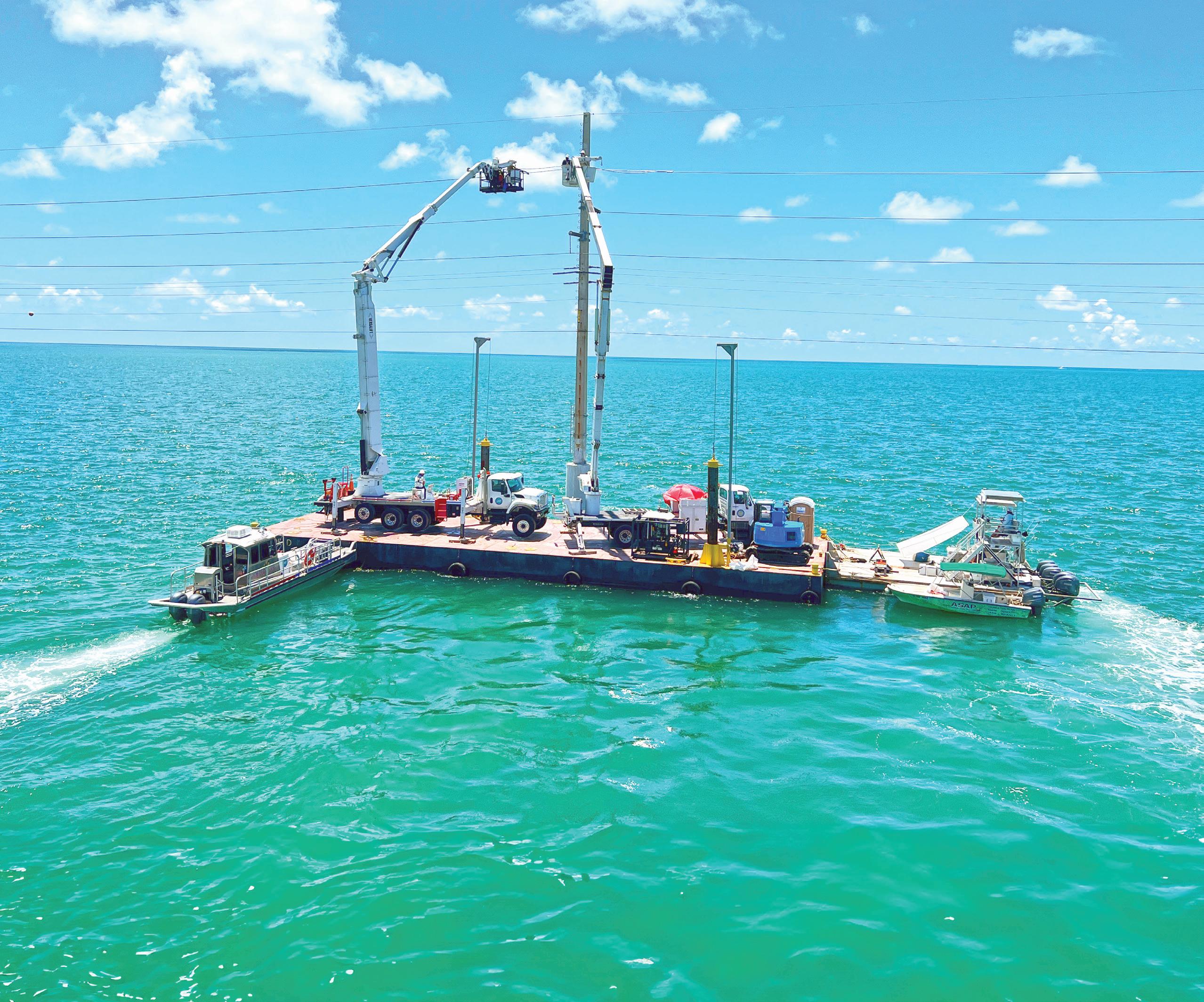
By Jen Calhoun
Taylor Hammack was wiring houses for a living around the time Hurricane Michael made landfall along the Florida Panhandle in 2018. The Category 5 hurricane flattened homes and businesses, destroyed infrastructure and left at least one town along the Gulf Coast in ruins.
The ordeal sparked something in Taylor as he drove to work one day.
“It was about three or four days after Michael hit, and I saw all these line crews on the side of the road getting the power back up,” he says. “Just seeing them do that after something catastrophic had happened—I thought, ‘That’s what I want to do.’ To me, it was a way to help people when they’re in need.”
Soon after, Taylor was hired as an apprentice lineworker at Gulf Coast Electric Cooperative, which put him through a four-year training program with Tennessee Valley Public Power Association. Today, Taylor is a journeyman lineworker.
Lineworkers install, maintain and repair power lines and
equipment on utility poles and underground electrical systems. It’s a tough but rewarding trade that usually requires three to four years of training to achieve rank as a fully qualified journey-level lineworker. A few other qualities are important, too, say lineworkers across the country.
Since the first electric wire was strung, lineworkers have held an important role in modern America. When disaster strikes, they’re the ones who get the lights back on. They work along city streets, farmlands and wilderness.
The job can be difficult and sometimes dangerous, but the rewards are excellent, says Nick Hagen, a journeyman lineworker at Northern Lights Inc. in Idaho.
“I like the appreciation the community gives us, especially after we get the power back on after three days, four days or even 10 days,” he says. “It’s a fulfilling job.”
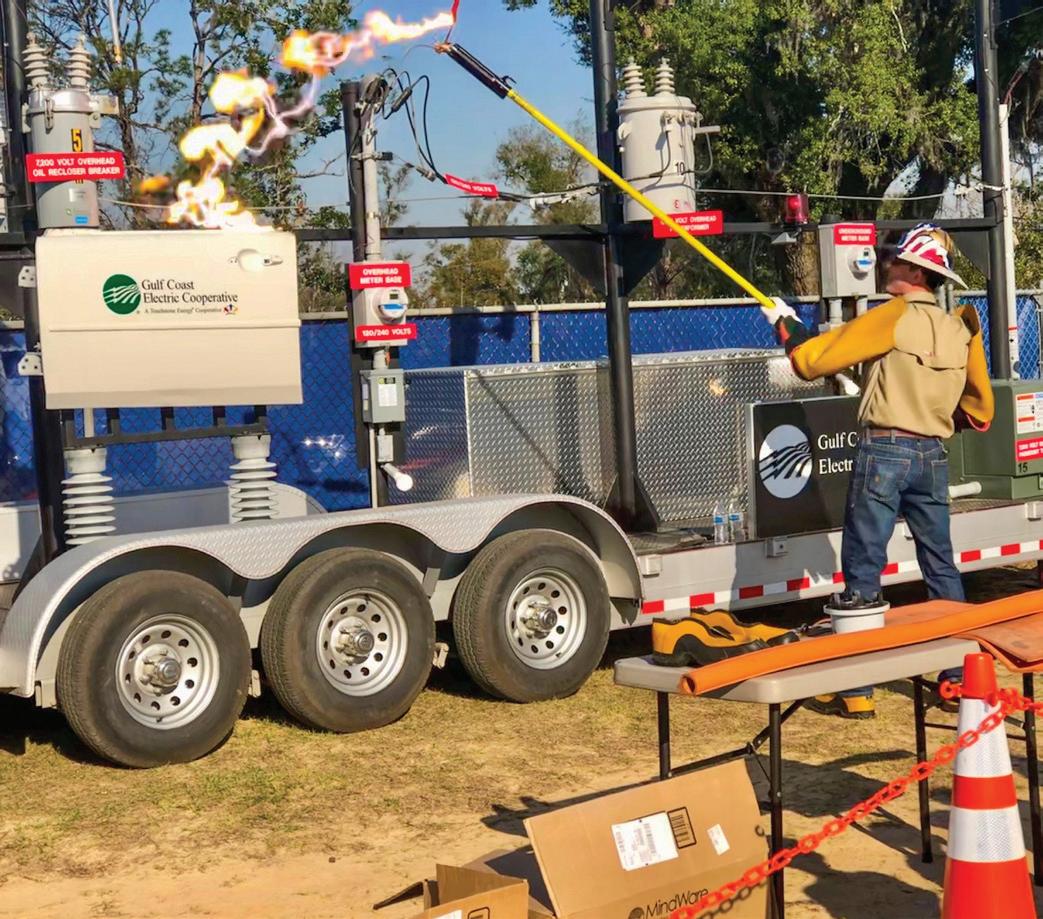
Nick remembers pulling up near a house to repair power lines one Christmas Eve.
“They had been out of power for days,” he says. “Once I finished, I remember seeing their Christmas lights come back on. I thought that was pretty cool.”
The pay is good, too, he says. Nick was making ends meet as a valet at a hotel when he first learned about the trade. He wanted a better life for his family, and linework fit the bill. It also gave him a chance at retirement.
“Getting a good job with a retirement where you could actually enjoy your life after work? Nobody had ever really talked about that to me,” he says.
While compensation and benefits vary for lineworkers depending on location, experience and other factors, the Occupational Outlook Handbook published by the U.S. Bureau of Labor Statistics reports the median pay in 2023 was $85,420 per year, or $41.07 per hour. However, those figures represent the middle of the pay range, and they don’t take into account overtime hours and additional jobs helping other utilities in the aftermath of storms—all of which can result in additional income.
Joining the trade means learning various—and oftentimes difficult—technical skill sets in and out of the classroom, all while maintaining a certain level of physical fitness, says David Bogue, a journeyman lineworker with Florida Keys Electric Cooperative.
Not only do lineworkers need to know how electrical systems work, they’re also required to learn numerous safety techniques. In addition, lineworkers climb utility poles wearing heavy toolbelts in all kinds of weather. The job requires working days and nights, depending on schedules and needs.
“Everybody’s story is a little bit different. Everyone gets into the trade in their own way.”
–EVAN PETERS, LINEWORKER AT BENTON REA IN WASHINGTON
“I would say becoming a journeyman is an attainable goal, but it’s a hard goal,” David says. “But, as someone once told me, I could throw a dart at a map and go get a job there. Also, the skills I’ve learned are not going to be replaced with AI anytime soon.”
Lineworkers can get their start by attending training schools, taking community college courses or working at a local utility in other capacities, such as a groundworker. Rudy Vega, a journeyman lineworker at FKEC, got his start doing right-of-way work with the cooperative 23 years ago.
“I had been working in a tree group there just under two years when the opportunity came up to be an apprentice lineman,” Rudy says. “They approached me and asked me if I was interested, and I said, ‘Definitely. I’ll give it my best.’”
Evan Peters, a lineworker at Washington’s Benton Rural Electric Association, was fighting wildfires when he first learned about the trade from a group of lineworkers.
When he expressed an interest in the job, one of the men suggested he attend a lineworker school. After graduating, he took a job at Benton REA.
“I like that it’s something new every day,” Evan says. “I like that I get to work outside with my hands, especially at a local utility. It can be really fulfilling.”
When it comes to joining up, however, Evan suggests those interested ask around before they jump in headfirst.
“I would tell them to reach out to local linemen,” he says. “Ask them how they did it. Everybody’s story is a little bit different. Everyone gets into the trade in their own way.” n
Must-haves:
X Be 18 years of age.
X Hold a high school diploma or GED.
X Maintain a valid driver’s license.
X Able to work at heights and lift heavy equipment.
Every lineworker has a story about how they got started, and there are many pathways to taking the job. Here are a few ways to make it happen:
X Join an apprenticeship program at a local utility.
X Enroll in a lineworker school or training program.
X Start at a utility as a groundworker or other job.
By Miranda Boutelle
Q: Spring is in the air. How can I prepare my home for lower energy bills once summer arrives?
A: There are many ways to get a jump-start on preventing summertime high bills and energy waste.
Add your cooling equipment to the spring-cleaning checklist. An annual tuneup by a heating, ventilation and air conditioning professional should include refrigerant charge, airflow adjustment, and condenser and evaporator fan coil cleaning. This tuneup helps maximize your system’s efficiency and the lifespan of your equipment, reducing wasted energy and costs.
Some HVAC companies offer discounts for cleaning equipment during the months they are less busy. Once high temperatures hit, they are more likely to be swamped with calls to repair or replace broken equipment. Signing up for an annual maintenance plan may provide additional savings.
A dirty furnace filter can waste energy by causing your system to work harder. Make sure you have a stack of replacement filters ready to go, so you are more likely to replace them as needed. Filters tend to be less expensive if you buy them in bulk. When I recently shopped for filters, the price was about half as much per filter for a 12-pack as it was for a two-pack.
For ductless heat pumps—also known as mini-splits—the filter is in the indoor unit and should be cleaned. If you clean the filter yourself, be sure to turn the unit off before removing it. Let it dry completely before putting it back.
As we transition from cool to warm weather, keep an eye on your thermostat settings. The U.S. Department of Energy recommends setting cooling temperatures to 78 degrees when you are home and higher when you are away. You can save as much as 10% a year on heating and cooling by adjusting your thermostat 7 to 10 degrees from its normal setting for eight hours a day.
One way to feel cooler is by using fans in the room you’re in during the day or when you’re sleeping. Using a fan can make a warm room feel cooler without having to adjust the thermostat. Fans cool people, not rooms, so they should be turned off in unoccupied spaces.
You can maximize the comfort benefit of a ceiling fan by switching the flow of air seasonally. The reverse function is great at circulating warm air in the winter. Once warmer weather arrives, make sure you flip the fan’s switch so it changes direction and blows air down into the living space.
Another consideration before summer hits is your home’s impact on peak load—when demand for electricity is highest. This typically occurs in the morning when people are getting ready for work and school and in the evening when they return

home. An electric utility must manage the energy use of everyone it serves, which can be a challenge. Consider starting the dishwasher before you go to sleep or starting a load of laundry outside of your utility’s peak times.
If you have a photovoltaic solar system, run your dishwasher or do laundry when your system produces the most electricity, which is typically during the sunny midday.
Cooking outdoors in summer is a great way to save energy. Using the stove or oven heats your kitchen, which requires more energy for cooling. Clean the grill now so you are ready to cook outdoors.
Incorporate these tips into your summer prep to save energy and lower your bills. n











Great ideas, those that stand the test of time, often arise from necessity. Such was certainly true for Jean Wells, who moved to Central Oregon in the ’70s to teach home economics, only to discover her students didn’t have access to the necessary materials.
Jean opened The Stitchin’ Post quilt shop in downtown Sisters to address this need, but took the opportunity a step further. She displayed about a dozen of her family’s quilts in the shop to showcase the centuries-old tradition of creating textile art.
Her students and local businesses loved the idea, which evolved into a quilt show that grew every year. This year, the Sisters Outdoor Quilt Show celebrates its 50th anniversary. It’s considered to be the world’s largest outdoor quilt show—although organizers admit that’s a tough claim to prove. Around 1,000 quilts will be on display throughout the town July 12 as part of a show that includes children’s activities and special events.
“It’s organically grown over the years,” says Dawn Boyd, executive director of the nonprofit that runs the show.


The event attracts 10,000 visitors to the town of 3,000 residents. Even more remarkable is the tiny staff that produces the show. Dawn has help from a part-time staff member and a group of volunteers ranging from a few people throughout the year to about 300 on show day. The annual economic impact the quilt show has on Sisters is estimated at $1.7 million.
“It’s so much fun, and you meet so many people from everywhere,” Dawn says.
Hundreds of quilts—items from Jean’s personal collection and those belonging to quilting teachers and students worldwide— are installed early in the morning throughout downtown Sisters. Admission to view these masterpieces is free.
“They’re all over town, like three blocks by seven blocks,” Dawn says. “There’s also a city park we take over.”
Local firefighters get in on the act, hanging quilts on the side of The Stitchin’ Post building. Visitors and residents love to watch the proceedings.
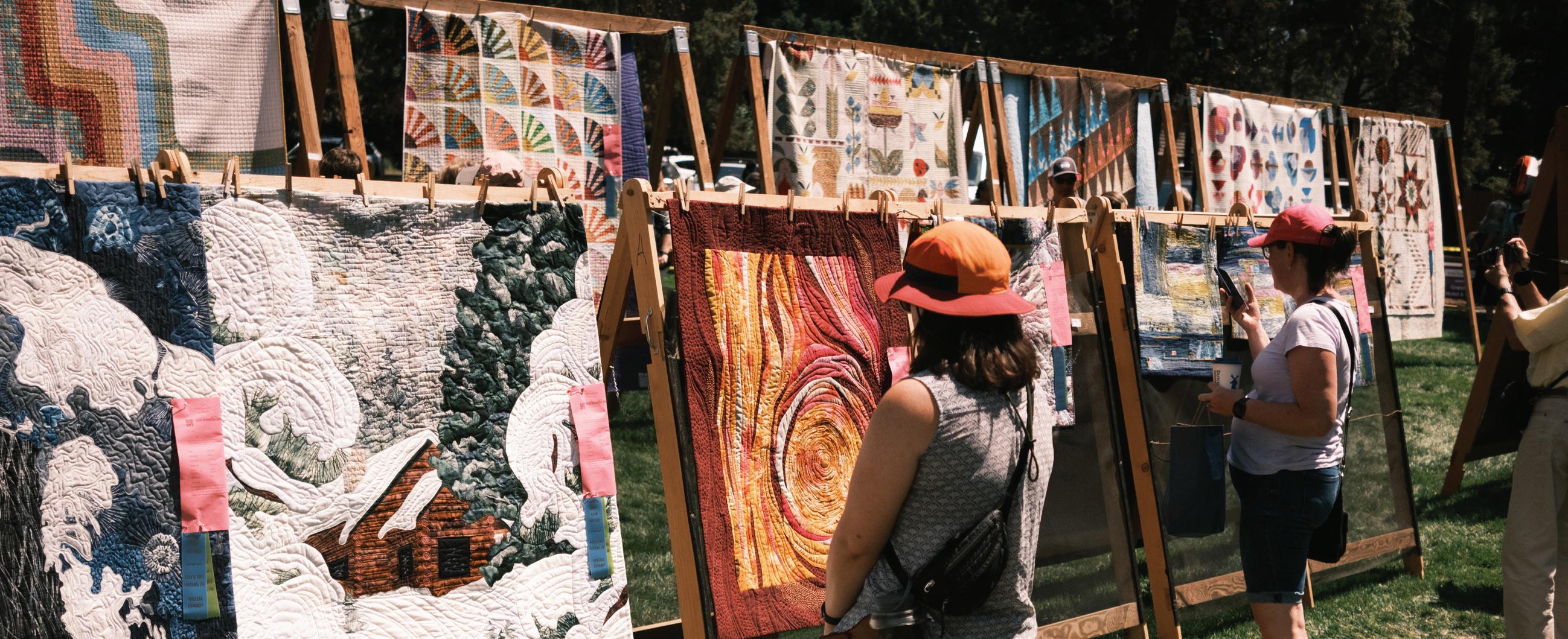

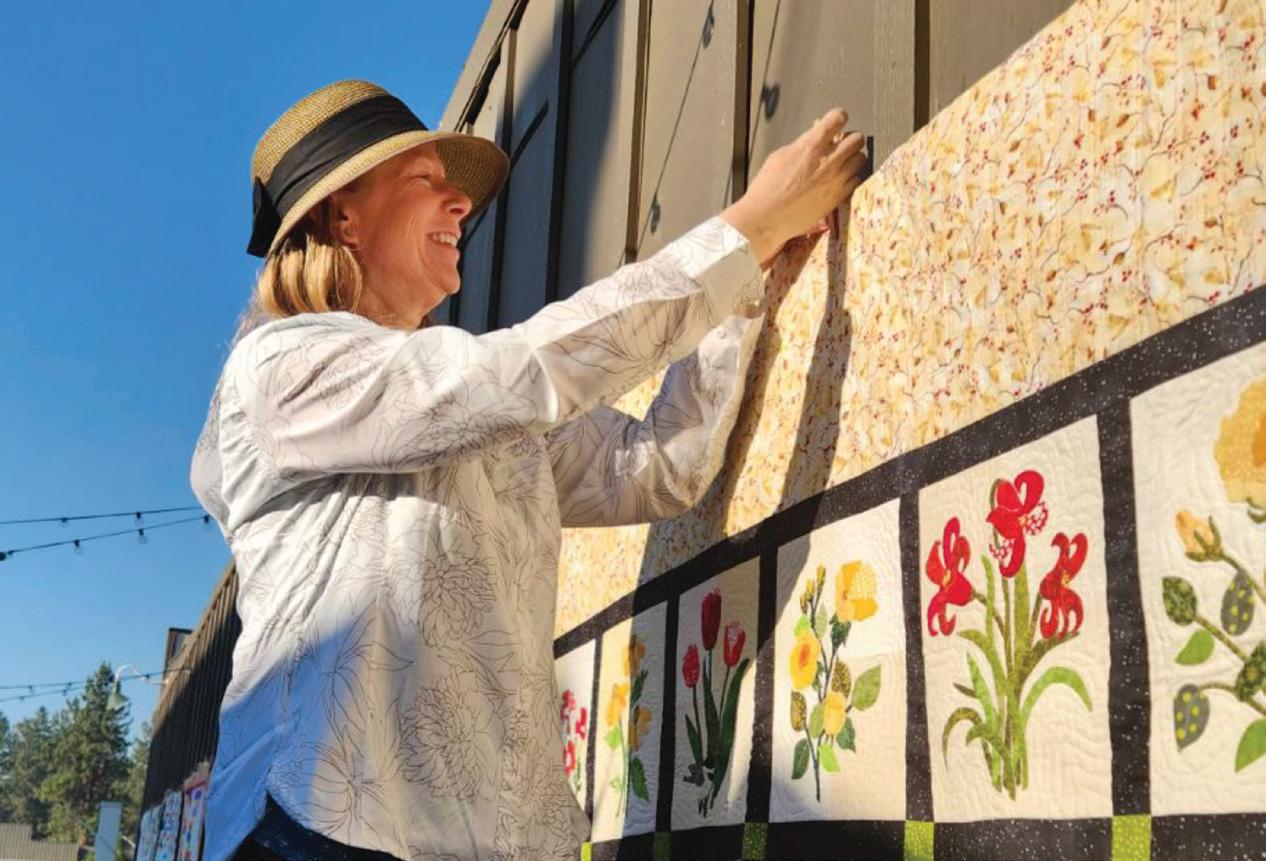
“It’s a highlight for some of our visitors,” Dawn says with a laugh. “They get a coffee, then they watch the firemen in action.”
This year, the quilts displayed on The Stitchin’ Post wall will be a log cabin pattern created by the shop’s employees. In addition to the quilts around town, children are invited and encouraged to make their own fabric-based crafts at the Kids Activity Center.
“It’s neat to show them how colors can go together,” Dawn says.
Quilters have a chance to use their talents to produce their own fabric postcards. The 19th annual Wish Upon A Card fundraiser challenges participants to create a 4-by-6-inch quilted art piece— called a postcard—using two fabrics designed by Giucy Giuce, a business run by designer Giuseppe Ribaudo. Contestants can create a similar postcard highlighting the 50th anniversary of the show. Winners receive quilt show goody bags.
Sales of both juried and nonjuried postcards help raise funds for an SOQS scholarship given to local high school graduates entering a collegiate fabric arts or design program.
“People love them,” Dawn says of the postcards.
Quilters can also compete for prizes in the Quilt Block Contest featuring the fabrics of sister quilter Kathy Deggendorfer’s Sisters Mountain Meadow collection. Each packet contains six fabric squares to build a finished 9.5-by-9.5-inch block. The first-place winner receives a cash prize, and honorable mentions are awarded additional fabrics.
For more information about the contests, visit soqs.org/contests.
Jean offers Quilters Affair—quilting classes led by teachers from around the world—the week before the show. The list of classes, held at The Stitchin’ Post, is announced in December, and many visitors make plans immediately. Accommodations in Sisters fill up fast.
“It’s a huge event for them, coming from all over,” Dawn says.
On Friday, July 11, Jean and her daughter, Valori Wells, a quilter in her own right, discuss the show’s history at an event called “A Town Covered in Quilts” at Sisters High School.
On Sunday, award-winning Dallas quilter Karen K. Stone offers walking tours at 9 a.m. and 1 p.m. and a lecture at 10 a.m. at FivePine Lodge Conference Center. Karen’s quilts have nabbed awards in international competitions, and her Indian orange peel

quilt is now part of the Quilt National Collection at the International Quilt Museum in Lincoln, Nebraska. There is a cost to attend both events, but visitors are free to enjoy Karen’s quilts on display from 10 a.m. to 2 p.m. along the creek at the conference center.
A raffle of a special 48-by-84-inch quilt raises more funds for the show. Valori designed a Sisters Scape pattern years ago, and Donna Rice and Jean reimagined the design in a piece they named “Sisters Scape Reimagined 2025: Celebrating the 50th anniversary of the Sisters Outdoor Quilt Show.”
The raffle quilt includes the iconic Three Sisters mountains, from which the town got its name, along with wildflowers, Ponderosa pine trees and Whychus Creek. June Jaeger recreated the design of the creek and its fish, while Donna, Jean, Jan Tetzlaff, Janet Roshak and Diane Jaquith pieced the remaining blocks and assembled the quilt. Annette Caldwell finished the quilt with machine quilting. Raffle tickets cost $5, and the winner is announced on show day.
As the show grew from its start in 1975, Jean created a nonprofit and handed over the reins, although she is still on the show’s board and is active in the annual event.
“She’s retired but still involved in everything,” Dawn says, adding the nonprofit show and its founder “are entwined like a bowl of spaghetti. We are separate but together.”
Like Jean, Dawn came to Sisters out of necessity. She and her family moved to coastal Oregon from Southern California but veered to Sisters after what Dawn calls a “midlife misdirection,” and a new college degree made her realize she longed for a career in event planning. The job of executive director emerged, and when she approached her husband about moving to Sisters, she learned it was his dream to live in Central Oregon.
Her mother, an active quilter, was pleased as well.
“I had quilted before,” Dawn says, but gave it up while raising a family. “Obviously, living here, I picked it back up.
“I didn’t have a choice,” she says with a laugh. n
For more information on the Sisters Outdoor Quilt Show, visit soqs.org.

By Ginger Meurer
Extending recreation and athletic opportunities to people of all abilities is the mission of adaptive sports and other organizations throughout the West. Accessible beaches, parks, trails, waterways and adaptive equipment allow participation for people who might otherwise be unable to enjoy these experiences. Here’s a small sampling of these inclusive efforts.
Oregon Adaptive Sports offers professional outdoor experiences supported by more than 350 volunteers and 30 certified instructors, catering to participants of all ages and abilities. It also provides access to state-of-the-art adaptive equipment.
“We have a fleet of sit-skis, adaptive mountain bikes and adaptive cycles,” says Executive Director Pat Addabbo.
He says Oregon is an ideal setting for outdoor activities.
“It’s a great place to come test out different types of equipment and to enjoy the hundreds of miles of trails that we have access to here. It’s a just a great place to get out and ride a bike.”
Oregon Adaptive Sports taps adaptable transportation to make sure athletes can easily reach activity sites. Affordability is at the heart of all the nonprofit’s offerings.
“We have a robust scholarship program,” Pat says. “We never turn

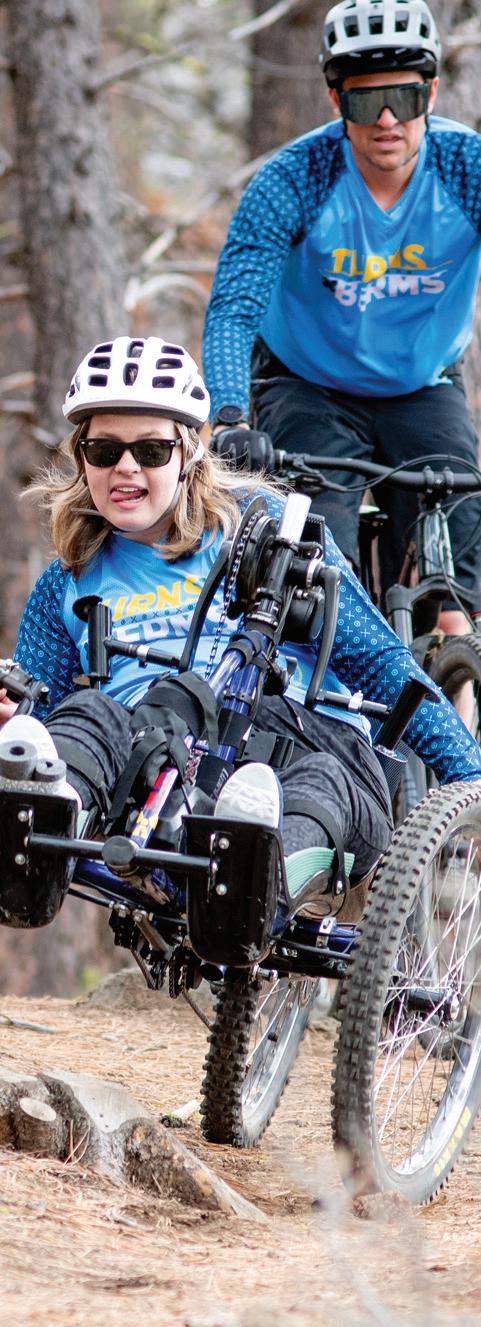

anybody away for inability to pay.”
Through a sponsorship from Toyota, new athletes can participate in three free experiences. Additionally, the Kelly Brush Foundation sponsors one of Oregon Adaptive Sports’ most unique events: Turns & Berms, a three-day camp designed specifically for athletes with paralysis caused by spinal cord injuries. Campers ski Mount Bachelor in the mornings and mountain bike in crisp spring air near Bend in the afternoons.
Fundraisers help, too. The biggest is the First Chair Gala, named for a golden opportunity skiers cherish.
“As a skier, the term First Chair has a bit of a palpable sort of magic to it,” Pat says. “It’s the idea of getting on the chairlift early in the morning with a whole day of adventure laid out in front of you. First Chair kind of captures that spirit, and that’s something that we’re always working to bring to our community— that participation and sense of adventure.”
Go to oregonadaptivesports.org for more information.
Nick Weiss first hit the basketball court in his wheelchair with Seattle Adaptive Sports at age 10. Today, he’s the nonprofit Paralympic sports organization’s operations manager.
“This is year 23 for me as far as playing wheelchair basketball,” Nick says. “This is the program that set me up to go play college ball. And for me, this is very full circle. I get to lead this organization, which has really impacted my life. I’m fully invested in this program and what we do.”
Originally managed by parents, the organization now sees athletes competing at elite levels. The goalball team just won a national championship, sled hockey is poised to launch a new youth team, and the power soccer program just received a grant to establish a competitive team.
The organization serves athletes ages 6 and older. But Nick hopes to reach families even earlier, perhaps even offering support and information to expectant parents whose child may
As athletes compete, Nick says they gain skills and make
“These are friendships that they’re going to have the rest of their lives,” he says. “And I say that from experience. I’m friends with the people I met when we all started playing when I was 10 years old.”
Learn more at seattleadaptivesports.org.

Coeur d’Alene, Idaho, prioritizes adaptive recreation, from a giant accessible playground built at McEuen Park in 2013 to newly paved hiking trails. The city’s biggest project was inspired by a wheelchair user who described the struggle of accessing the water at Atlas Mill Park. She said when she wanted to swim, she had to
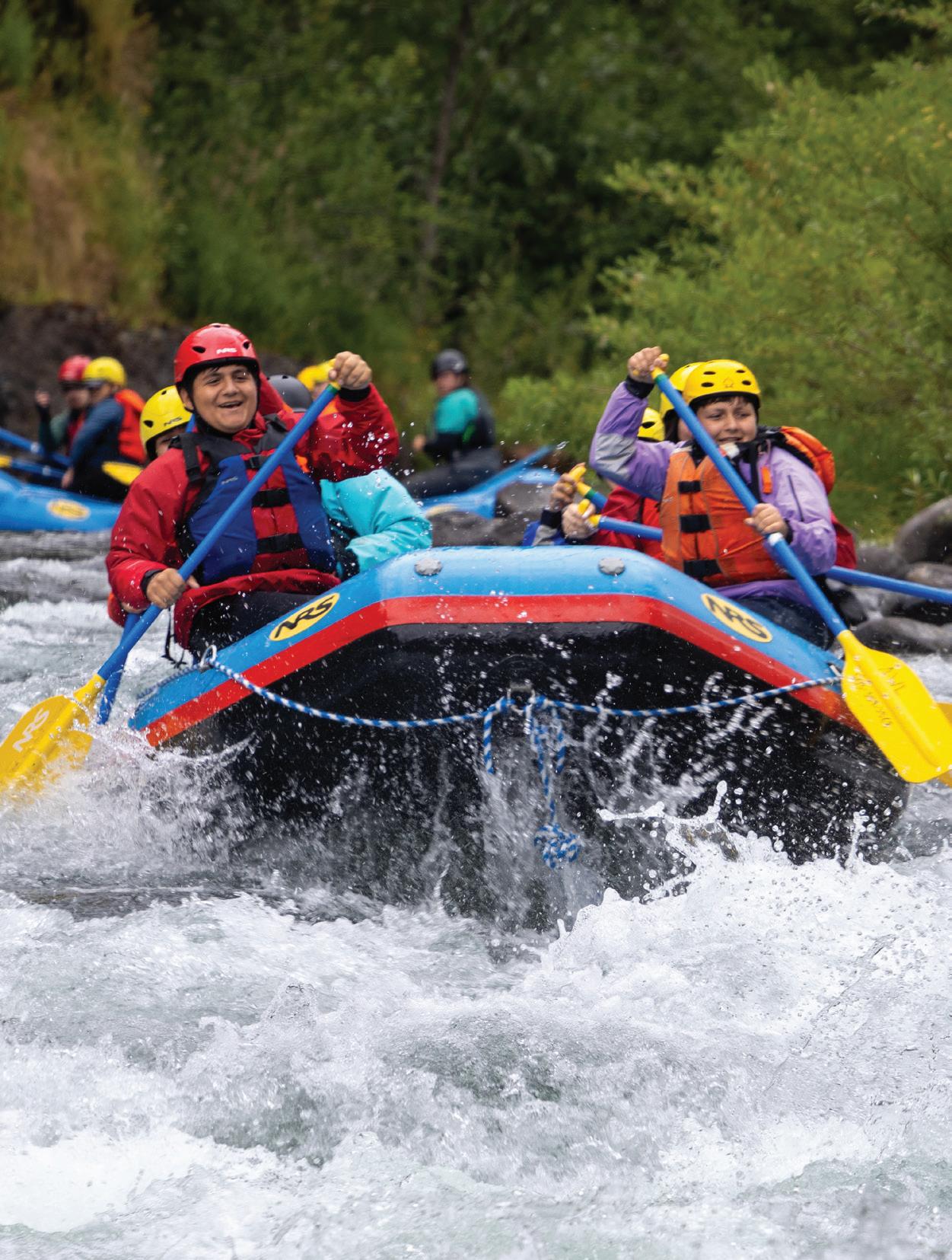

Families explore Oregon’s beaches using tank-like track chairs provided by David’s Chair. At top, adventurers enjoy Harris Beach in Brookings during a 2023 spring break excursion. Below, a family takes in the sights at Cape Kiwanda in Pacific City, Oregon, also in 2023. PHOTOS COURTESY OF DAVID'S CHAIR


wheel herself to the sand, throw herself out on the ground and crawl to the river’s edge.
“I said, ‘Well, we’ve got to do better than that,’” says Parks and Recreation Director Bill Greenwood.
He worked with an engineer and the Post Fallsbased Idaho Disability Action Center to develop an accessible swim entry point on the beach at Atlas Mill Park. Resembling a boat launch, the ramp allows wheelchair users to roll themselves into the water, secure their chairs and swim off on a flotation device. The same location also features an accessible kayak launch, dog park and picnic area.
For more information on the Idaho Disability Action Center, go to dacnw.org. Details on Atlas Mill Park are at cdaid.org/5883.
Along the Oregon coast, communities offer accessible kayak launches and mobility mats known as Mobi-Mats—portable, durable pathways laid out seasonally to facilitate beach access. Some municipalities also loan out Mobi-Chairs, floating beach wheelchairs.
Lincoln City provides beach wheelchairs on a firstcome, first-served basis year-round. From Memorial Day through Labor Day, the city rolls out mobility mats at multiple beach access points. To reserve a chair, go to explorelincolncity.com/wheelchair.
Visitors to San Diego will find accessible mats at Moonlight Beach and beach wheelchairs at Newport Beach.
Go to traveloregon.com/things-to-do/trip-ideas-accessible-travel for accessible travel ideas in Oregon. In San Diego, find details at sandiego.org.
The Grand Canyon’s South Rim offers barrier-free experiences. Departing daily from Williams, Arizona, the Grand Canyon Railway's trains feature accessible seating in coach and first class. The South Rim also offers several wheelchair-accessible viewpoints, paved scenic trails like the Rim Trail and shuttle buses equipped with lifts.
Learn more at thetrain.com/the-train and grandcanyontrust.org/ hikes/cpe-grand-canyon-rim-trail.
When David Hartrick was diagnosed with ALS, the Oregon outdoorsman was determined to seize the time he had left. But how do you hunt, hike or fish when you can’t leave the pavement? The answer was an all-terrain track chair, essentially a one-person tank. Facing a $20,000 price tag that his insurance company wasn’t willing to cover, David turned to his buddy, Steve Furst.
“It was stumble and bumble and find our way,” Steve says.
“We raised money for the one chair, and we had some leftover, so we bought a youth chair, also.”
Steve credits David with the plan to share the chairs.
“It goes back to his insight and his vision,” Steve says. “He talked about giving the chair to somebody else. ‘You give it to somebody, and one person gets in the chair a few times a year, maybe. But, hey, what if we come up with a plan so anybody can use the chair?’ And then we just fumbled through the nonprofit stuff and put it together.”
On Jan. 11, 2018—only 11 months after his diagnosis—David died, leaving behind a growing legacy. With Steve as CEO, David’s Chair now manages 23 track chairs and three golf chairs available for free to people with mobility challenges.
Partner organizations and volunteers manage the chairs at fixed locations like beaches, golf courses and trails. Most of the chairs are at Oregon beaches, but reservable chairs are also available in the California Redwoods, at the Rosewood Nature Study Area in Reno and Ten Mile Ranch in Texas. Tow ’N Go chairs also allow users to enjoy independent outdoor adventures.
Steve sees familiar names come through the reservation system that serves just under 1,000 people annually.

“There’s about three or four that regularly will go up and down the coast enjoying it, and that’s awesome,” he says.
Learn more about the nonprofit or reserve chairs at davidschair.org.
All abilities and ages are served by the Oregon-based adaptive and inclusive outfitter Adventures Without Limits. The organization hosts private groups and community trips, and, in winter, it leads snowshoeing and cross-country skiing trips.
Participants with ambulatory challenges participate on sit-skis. Spring through fall, there are more outdoor activities.
“We raft, kayak, canoe, paddleboard, hike and camp—a little bit of rock climbing, as well,” Director of Outreach and Development Jennifer Wilde says.
Using adaptive equipment, patience and sometimes a bit of foam, duct tape and creativity, the organization ensures outdoor recreation is available to all.
“We want to share all these beautiful spaces and activities in Oregon with everyone and believe that nature should be accessible for everyone,” Jennifer says. “We’re always excited to connect new folks to the outdoors and come up with creative solutions to meet their individual needs to make it accessible for them in whatever way that means.”

“They can go hunting, camping, fishing, wherever they want to go for seven days at a time,” Steve says.
Many organizations provide information on accessible locations and activities.
Visit Idaho offers an online accessibility tool packed with resources. Go to visitidaho.org/ things-to-do/accessible-activities for firsthand accounts of locations from Craters of the Moon National Monument to Shoshone Falls to College of Southern Idaho’s Centennial Observatory.
“We’ve realized that while we can make the outdoors more accommodating, it’s challenging for visitors to enjoy if we don’t provide the needed information when they are planning their trip,” says Andrea Rayburn, a Visit Idaho tourism specialist.
In addition to destination information, Visit Idaho highlights organizations working to help, like People Need People, a group that brings
Learn more at awloutdoors.org. n
in volunteers to help trail explorers by pulling and pushing them in all-terrain wheeled chairs through the hills. There’s also Boise Adaptive Snowsport Education, a 100% volunteer-staffed program offering adaptive ski lessons. Western Adaptive Veteran Education Snowsports provides adaptive equipment, ski and snowboard instruction, and therapeutic experiences for veterans.
Disabled Hikers, a Carlsborg, Washingtonbased nonprofit, offers resources, events and group hikes. Its website, disabledhikers.com, is packed with detailed trail guides to accessible destinations like Rialto Beach in Olympic National Park, Big Creek Nature Trail near Hoodsport, Washington, and entire regions like the guide to the Boise, Idaho, area.
Access California’s website, accessca.org,
is packed with detailed guides to accessible trails, parks, gardens, lodging and resources for adaptive equipment.
Folks looking for accessible lodging, transportation or location booking information internationally should visit accessiblego.com. Wheel the World also helps with bookings and lists accessible group tours, activities and equipment rentals.
The Administration for Community Living maintains a list of centers for independent living on its website, acl.gov. These organizations, found in every state, provide accessibility tools. One example is Ability 360. With Arizona offices in Phoenix, Gilbert, Pima County, Glendale and Pinal-Gila County, Ability 360 is a home for accessible sports, fitness and lifestyle transition education.
2 pounds thick-cut lamb rib chops
4 cloves garlic, minced
1 tablespoon fresh rosemary, chopped
1 tablespoon Dijon mustard

11/4 teaspoon kosher salt
1/2 teaspoon ground black pepper
Zest of 1 lemon
1/4 cup olive oil
Combine the garlic, rosemary, Dijon mustard, salt, pepper, lemon zest and olive oil in a measuring cup.
Pour the marinade over the lamb chops, flipping them over to cover completely. Cover and marinate the chops in the refrigerator for at least one hour or up to as long as overnight.
Let the lamb chops come to room temperature before grilling.
Grill the lamb chops on medium heat for 7 to 10 minutes or until the internal temperature reads 135 F.
Allow the lamb chops to rest on a plate covered with aluminum foil for 5 minutes before serving.
2 pounds fresh asparagus
2 tablespoons olive oil
1/4 teaspoon freshly ground black pepper
Heat oven to 400 F.
1/2 teaspoon kosher salt
1/2 cup freshly grated Parmesan cheese
2 lemons, cut in wedges
If the stalks of the asparagus are thick, peel the bottom half of each. Lay them in a single layer on a sheet pan spread with aluminum foil. Drizzle with olive oil. Sprinkle with pepper and salt.
Roast until tender, about 15 to 20 minutes. Sprinkle with Parmesan cheese, and return to the oven for another minute. Serve with lemon wedges.
2 pounds Yukon gold potatoes, peeled and cut into chunks
Salt
1/4 cup heavy cream
4 tablespoons unsalted butter, divided
1/4 teaspoon nutmeg
1/2 teaspoon black pepper
3 large egg yolks
Place potatoes in a medium to large pot, and cover with a few inches of cold water. Add a few teaspoons of salt to the water. Bring to a simmer. Cook until the potatoes are forktender, about 20 to 25 minutes.
While the potatoes are boiling, melt 2 tablespoons of butter, and set aside. You will use this butter to coat the potatoes right before they go into the oven.
Heat the oven to 425 F.
When the potatoes are cooked, drain in a colander. Put the potatoes back in the pot, and set over low heat. Allow them to release steam for a minute or two.
Add 2 tablespoons of butter, and mash the potatoes until the butter has been incorporated. Add the nutmeg, black pepper and heavy cream. Continue mashing the potatoes. Once everything is incorporated, add salt to taste. Add the egg yolks. Continue to mash until the mixture is smooth. Do not over-mash, or your potatoes will end up with a gluey consistency.
Put the mashed potatoes in a piping bag with a large star point. Pipe the potatoes onto a cookie sheet. Brush the swirled edges with melted butter so they brown nicely in the oven.
Bake until nicely browned, about 20 minutes. Serve hot from the oven.
Salad
10-ounce bag baby spinach leaves, rinsed and drained
1/2 cup walnut pieces
1/2 cup crumbled feta
1/4 cup aged balsamic vinegar
1/4 cup extra-virgin olive oil
2 to 3 tablespoons honey
1/4 medium red onion, sliced thin
1/4 cup alfalfa sprouts
1/2 cup pomegranate seeds
2 teaspoons Dijon mustard
1/2 teaspoon dried thyme
1 clove garlic, minced
Salt and pepper
Combine all vinaigrette ingredients. Shake well.
Place spinach in a salad bowl. Top with walnuts, feta, red onion, alfalfa sprouts and pomegranate seeds. Drizzle with vinaigrette.
1 package yellow cake mix
3.4-ounce package instant pistachio pudding mix
Icing
3.4-ounce package instant pistachio pudding mix
1 cup cold heavy whipping cream
3/4 cup cold whole milk
Heat oven to 350 F.
4 large eggs
1 cup club soda 1/2 cup canola oil
2 teaspoons confectioners’ sugar
1/2 cup chopped walnuts for garnish
In a large bowl, combine the cake mix, pudding mix, eggs, soda and oil. Beat on low speed for 30 seconds. Beat on medium for 2 minutes.
Pour into a greased and floured 10-inch fluted tube pan. Bake for 40 to 45 minutes or until a toothpick inserted in the center comes out clean. Cool for 10 minutes before removing from the pan to a wire rack to cool completely.
To make the frosting, beat the pudding mix, cream, milk, and confectioners’ sugar on high in a large bowl until stiff peaks form. Frost cake. Sprinkle with walnuts. Refrigerate until serving.
I am looking for booklets for beaded Christmas ornaments. Possibly called “Beaded Fantasies.” I am willing to purchase and refund postage. Thank you.
Betty Mercado
1820 E.10th St. The Dalles, OR 97058 bettym@centurylink.net
My daughter, sister and I would like more unwanted jewelry. We are making jewelry for seniors.
Marsha Holeik
16637 William Foss Road LaPine, OR 97739
Looking for old-style 9-pound 100% cotton typing paper for my hobby. It is very thin and may be called onion skin or parchment paper. Any color of paper. Willing to pay postage. Thank you.
Robert Pierce
9715 Buckingham Drive Pasco, WA 99301 Rcpljp@aol.com
I am starting sewing lessons for young children. In need of small printed fabrics, lace, trims and buttons. Doll or stuffed animal patterns. Will pay postage. Thanks.
Jan Dwyer
19111 Buck Drive Bend, OR 97703
I have an 11-year-old dressage saddle that is not rideable anymore because of a compromised tree. The black leather is in excellent condition. If you are a leather artisan, there is a lot of beautiful, usable leather. Come to pick it up and it is yours.
S. Stelzer
P.O. Box 352
The Dalles, OR 97058
My dad turns 90 in early spring. He is a cowboy at heart; you never see him without a cowboy hat on. He loves John Wayne and has watched all of his movies multiple times. He is an avid reader and had a large Louis L’amour collection. He loves old Ford trucks—the older, the better. He plants and maintains six large flower beds at home. He is easy-going and always has a smile on his face. He would love to hear from readers for this milestone. Please send to Don Whitehead, 590 NW 23rd St. #124, Redmond, OR, 97756.
Lori Blackburn Redmond, Oregon
Our mother, Myrtle, will be celebrating her 100th birthday in April. She was raised in Lonerock, Oregon until her older sister started high school in Condon. Myrtle completed school in Condon and married her sweetheart, Garland, right after her graduation. They raised five children. She spent many years tending to plants in their country home yard, vegetable garden and green house. Now she lives at Summit Springs Village in Condon and enjoys getting mail other than bills. Please send cards to Myrtle Potter at P.O. Box 116, Condon, OR 97823. Thank you.
Sharon Hamner Condon, Oregon
Looking for intermediate to advanced sheet music or books for one or two violins, any style. I am willing to reimburse for shipping.
Ilya Perry
P.O. Box 404 Lyle, WA 98635
My mom, Susan Monihan, had her 80th birthday in December, and she was so amazed at all the love she received from Ruralite readers! She received more than 200 cards and gifts. She is still reading your lovely notes. You really blessed her and made her birthday memorable.
Kristi Snyder
Trout Lake, Washintgon
Thank you to the readers who showered my father, Doug Nelson, with cards for his 98th birthday. I was able to be there for a couple days and see the joy on his face when my mom returned each day with a bag full of cards. Each card was carefully opened and read before saving the stamp and recording the town it was sent from. It brought so much happiness to their home. Thank you for showing him how much he matters.
Leslie Feltman Stanley, Idaho
Send your request—with no attachments—to readerexchange@ruralite.org or mail to Reader Exchange, 5625 NE Elam Young Parkway, Suite 100, Hillsboro, OR 97124. Fill in the subject line with Reader Exchange. Acceptance, scheduling and editing are at the editor’s discretion. Single requests only, please. No duplicates.
Submissions are handled on a first-come, first-served basis and as space allows. We cannot honor every request.
Please affirm you have authorization from all appropriate parties before submitting. By submitting, you indemnify Reader Exchange, Pioneer Utility Resources Inc., its officers, directors, employees, utility clients and insurers from all legal liability incurred by the publication of information.
We no longer accept pen pal requests. You may submit a pen pal request as a Marketplace ad. Marketplace pricing applies.
When submitting a milestone request, please send it at least two months before the milestone.
Phone numbers will not be published. Email addresses will be published if part of the ad, but the request must include a postal address.
Request must include the name and address of the electric utility that provides your magazine.










































Thousands of years of geological history stacked atop each other are visible to all at Canyonlands National Park in Utah. The state’s largest national park at more than 330,000 acres, Canyonlands has four sections: Island in the Sky, Needles, The Maze and The Rivers. Split by the Green and Colorado rivers, all four sections are separate, and travel between them is difficult.
Much of the rock in Canyonlands National Park was once under water, carried in by rivers and tributaries. Over millions of years, movements in the Earth’s crust have raised the rock to more than 5,000 feet above sea level. The Green and Colorado rivers eroded the exposed rock, creating deep canyons.
With cliffs rising 1,000 feet above its surroundings, Island in the Sky is a tall mesa and the easiest part of Canyonlands to visit. The 34-mileround-trip scenic drive up the mesa has many beautiful viewpoints. Popular hikes for the whole family include the .6-mile hike to the Mesa Arch. In summer, rangers sometimes host nighttime stargazing events on the island.
Striped sandstone spires rise out of the ground in the Needles district (pictured), which makes up the southeast corner of the park. The district is great for longer hikes, with more than 60 miles of interconnected trails. The Cave Spring Trail is popular for families, while the roughly 11-mile Chesler Park Loop is a popular, albeit strenuous, hike.
Directions into each district can be difficult, and satellite navigation can be misleading. The National Park Service suggests following a physical map. As with many national parks, Canyonlands requires a pass. To start planning your trip, visit www.nps. gov/cany or call 435-719-2313.





















Story and photo by Dave LaBelle
As a small child, I was spellbound by giant rainbows stretching across the valley near our home. The magnificent bands of glistening colors felt so close I could almost touch them, bathe in them. Believing there was a pot of gold buried where each end of the rainbow touched the earth, my siblings and I sometimes raced barefoot across the fields hoping to find the treasure before the magical bow disappeared.
I’m not sure at what age I outgrew the legend of hidden treasure. Perhaps it was the same time I began questioning the Easter Bunny?
Sadly, as I grew older and wiser, the awe I once had for those fading, magical colors also disappeared. As a teenager, rainbows no longer held the same allure.
But then, not long after my mother disappeared in floodwaters and our home was washed away by endless days and nights of torrential rains, I was reading in the book of Genesis how God set a bow in the sky after the great flood as a sign the Earth would never again be destroyed by water. As you can imagine, the story stirred my heart, and I have never viewed a rainbow the same since. And soon that mystery—that childhood wonder—even returned.
I believe rainbows will forever capture our imagination.
Whether you believe the Bible story or are simply touched by those colorful, curved ribbons of light stretching across the sky or magically appearing in the mist above a lake or river, there is something beautifully comforting and hopeful about seeing a rainbow appear.

Photographer, author and lecturer Dave LaBelle has captured special moments for more than half a century, sharing photo tips and life perspectives with readers. For more of his writings, visit davidlabelle.com and his blog at bridgesandangels.wordpress.com.
NIKON D810 70mm lens ISO: 125 f/5 at 1/640
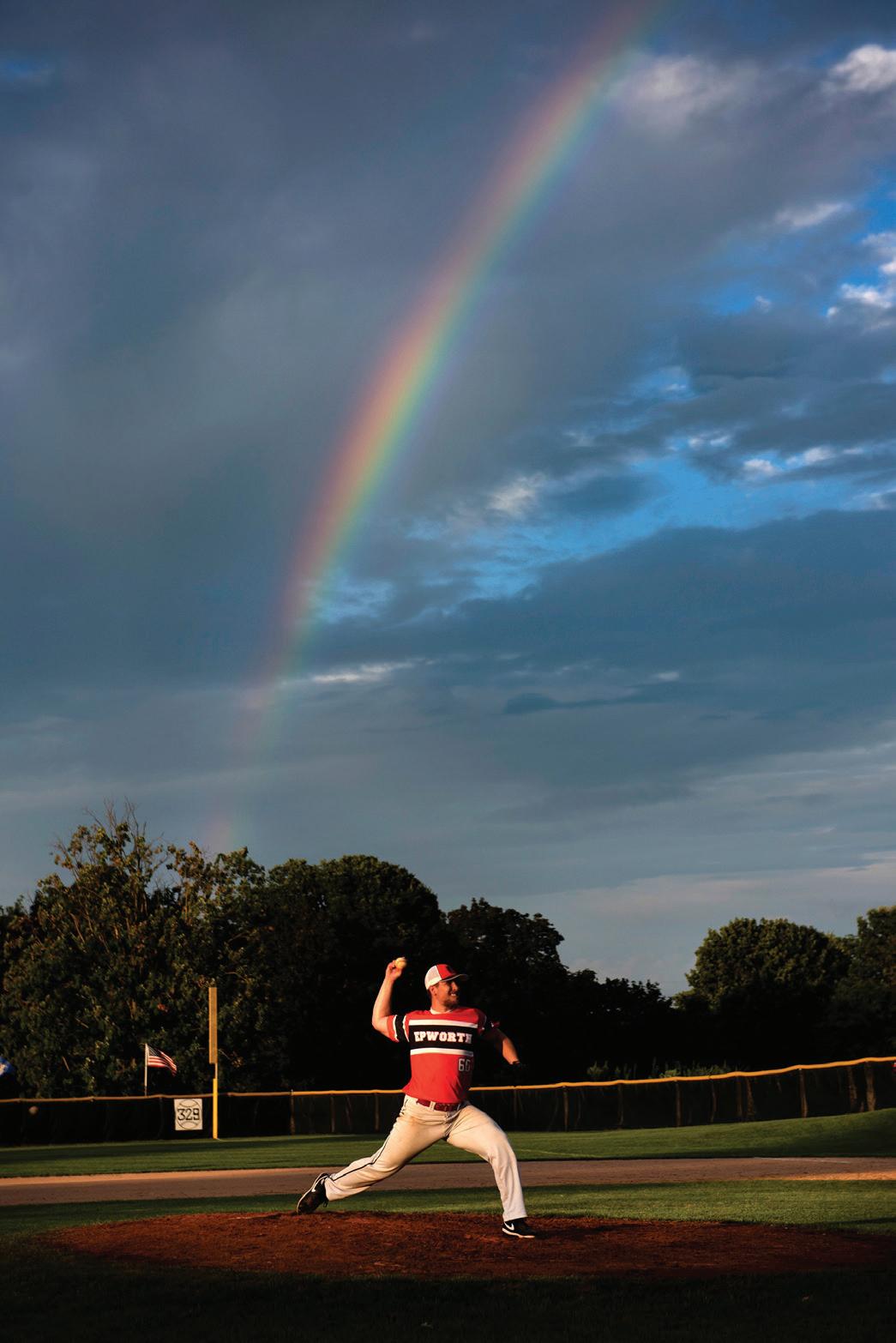
Including an interesting foreground creates scale, depth and dimension. A vibrant rainbow can be the star of your photograph or an unexpected accent to complement an already colorful scene, such as pitcher Max Steffens, of Epworth, Iowa, competing in a semipro baseball tournament.
Keep your camera close and be ready as storms clear and rains cease. Often after a rainy day, clouds part before a sunset, and a rainbow alone can be a breathtaking sight.
Email your best image (just one, please) with caption information, including an explanation of how it affects you, to gph@pioneer.coop. We may share submissions on our website and social media channels.




























You may think you know what“priceless” means—usually, it just means “astronomically expensive.” But not at Stauer. Priceless means FREE.
Stauer is smashing luxury norms with our FREE 77-Carat Durango Howlite Necklace. at’s right—zero dollars.* is genuine howlite piece, valued at $299, is yours for FREE—just cover $24.95 for shipping and processing. Plus, we’ll send a $25 Discount Coupon, making shipping Better an Free! No tricks, no obligation—though resisting our luxury deals won’t be easy.


Why give away jewelry? Because once you see Stauer’s rare gemstones and vintage-inspired watches, we know you’ll fall in love. If not, keep your FREE necklace—no hard feelings.
Howlite, discovered in Nova Scotia, has been a gemologist’s secret, often compared to turquoise. Our Durango Collection channels classic Southwest jewelry, featuring blue-green beauty in oxidized silver settings. Get nearly 160 carats for just $79!
is deal won’t last—we only have 2,500 left. Call now to claim your FREE necklace and experience a new kind of priceless luxury!
Jewelry Speci cations:
• Enhanced howlite.
• Oxidized silver finish.











• Necklace: 23" + 2", lobster clasp.
• Earrings: 3" drop, French wire.
• Bracelet: 7", elastic.
Durango Collection— Call In Only
A. Necklace (77 ctw) $299 FREE* + S&P Save $299
B. Earrings (23 ctw) $199 $49* +
Set of all 3
$79* + S&P
$718 *Special price only for customers using the offer code.
This 8½-by-11-inch indexed cookbook features yeast breads, quick breads, scones and specialty breads for $10 (includes postage).

TO ORDER BY MAIL:
Submit payment with cookbook title, your name, address and number of cookbooks wanted to:
Ruralite Cookbooks
P.O. Box 1306
North Plains, OR 97133
TO PAY BY PHONE:
Call 503-357-2105 for credit card payments with Visa, MasterCard, Discover or American Express.
TO ORDER ONLINE: Visit www.ruralite.com. Please allow two to three weeks for delivery.
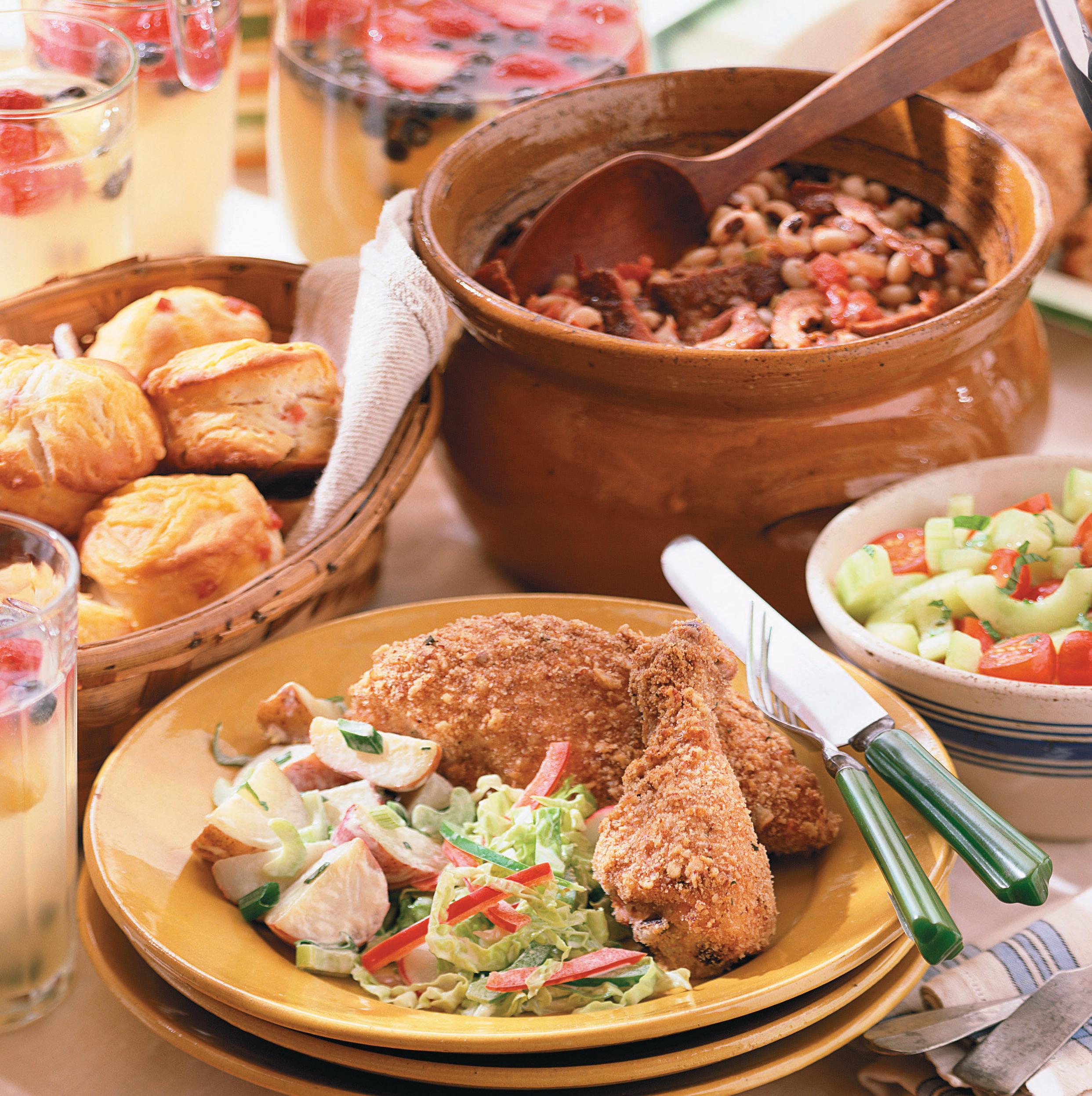



With more than 200 recipes, this cookbook from our 2007 contest offers options for potlucks, family reunions or picnics. As a bonus, additional pages feature previously unpublished barbecue recipes from a 2006 contest. The 8½-by-11-inch indexed book is $10 (includes postage).
Recipes submitted by Readers for the March 2007 Contest
TO ORDER BY MAIL:
Submit payment with cookbook title, your name, address and number of cookbooks wanted to:
Ruralite Cookbooks
P.O. Box 1306
North Plains, OR 97133
TO PAY BY PHONE: Call 503-357-2105 for credit card payments with Visa, MasterCard, Discover or American Express.
TO ORDER ONLINE: Visit www.ruralite.com.
Please allow two to three weeks for delivery.
Dear Neighbor,
At DFN, we believe that great internet service is about more than just speed—it’s about trust, reliability, and a commitment to the communities we serve. As a 100% locally owned and operated company, DFN takes pride in providing exceptional service from the Oregon coast to the Cascades. Our fully fiber network connects homes, schools, and businesses with the fastest, most dependable internet available, and our local team is always here to support you.
Unlike large, out-of-state providers, our customer service team lives and works right here in your community. When you call DFN, you’re speaking to a neighbor, not a call center thousands of miles away. We understand the unique needs of our region, and we take a hands-on approach to delivering the best possible service. Whether it’s preventing outages before they happen or responding quickly to restore service when necessary, our team works tirelessly to keep you connected.
Our local roots also mean that DFN reinvests in the communities we serve. By choosing DFN, you’re supporting a company that contributes to local schools, businesses, and community initiatives. Strong internet infrastructure is vital for education, economic growth, and innovation, and we’re proud to play a role in building a brighter future for our region.
We are committed to providing customer service that exceeds expectations because to us, you’re more than just a customer—you’re a neighbor.
If you ever need assistance, our team is just a phone call away. Experience the DFN difference today.

Sincerely, Todd Way Chief Executive Officer Douglas Fast Net (DFN)

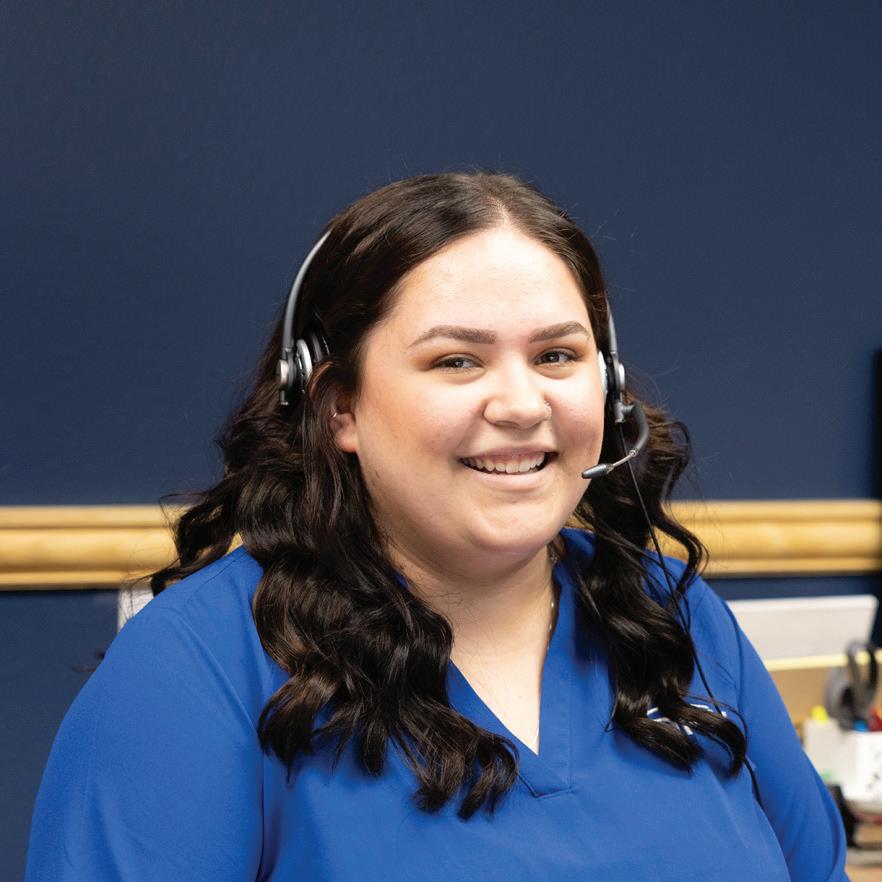

4x5 round bales, Meadow foxtail orchard grass. 4x4 Timothy, small square. 208-4354637 or 208-435-4002; nas@cpcinternet.com. 1225
Reinforced custom-sized pond liners (39 cents/sqft). Hay covers, greenhouse covers, any width and length. Truck tarps and more. High puncture and tear strength. Best price guaranteed. Celebrating 43 years in business. www.btlliners.com. 541-447-0712. 0425
Buying antiques and collectibles: advertising signs, porcelain signs, gas pumps, beer signs, antique toys, cast-iron coin banks, neon signs and more. Jason, 503-310-3321 or tjabaughman@yahoo.com. 0925
Buying American Indian collectibles, Navajo blankets and rugs, baskets, beadwork, etc. Also, quality paintings of the early Southwest and Americas. Call 760-409-3117 or send photos to amer.ind.baskets@gmail.com. 0625
WC Collectibles. We buy comic books! Local to Inland Northwest. Willing to travel. WCCollectiblesCheney@gmail.com; 509-496-1835. 0525
1976 GMC half-ton pickup sitting for 20-plus years. Body good, runs when parked. Interior needs rehab. Reno, NV. $4.5K. Dale, 775-742-2989. 0425
Wanted: running board for 1928-29. AA express truck. 69 ¾” x 9 ½” with Ford script in middle. Allen Piquet, 541-571-4506; Piquetat1967@gmail.com. 0425
Health forces sale. Two-for-one: 1971 Ranchero and 1974 race car. Ranchero needs work; race car for parts. $1.75K. garyvavzycki@gmail.com. 0425
Books, Magazines, Videos
“The Bunny Book; What Would You Name a Book about Bunnies and God?” Bunnies learn about matches, separation, bullying, fear, death, God and more. 626-482-4955. 0425
Business Opportunities
Urgently needed: company that can raise up a foundation in Fairbanks, AK area. My house is sinking. John, alaskamoose@yahoo.com and 812-896-9951; or leave a voice message at 812-967-3220. 0425
Ads 25 words or fewer are $35 a month. An extended ad of up to 35 words is $50 a month. Contact information is included in the word count. Phone numbers and emails count as one word.
Longer ads may be placed. Contact 503-357-2105 or info@pioneer.coop for pricing information.
Ads are for customers of member co-ops, public utility districts and municipals only. Subscribers and nonmembers may inquire about pricing at 503-357-2105 or info@pioneer.coop.
Ads must be direct and in first person, and are subject to approval and editing.
Closing deadlines (in our office): June issue—April 30, 2025.
If submitting ad by mail, send appropriate payment with your name, address, email, phone number and the name of the electric utility that provides your magazine to: Marketplace, P.O. Box 1306, North Plains, OR 97133. Make check or money order payable to Ruralite.
We accept credit card payments for ads submitted by email. Send ad to info@pioneer.coop. Call 503-357-2105 to pay by credit card.
Advertisements are accepted in good faith. Pioneer Utility Resources is not liable for interactions between buyers and sellers.
Turnkey cafe, pizza, bakery in the picturesque town of Cedarville, CA. Newly renovated, fully equipped commercial kitchen, cozy dining and bar room, potential mini brew pub. Priced for quick sale, $225K. Shelia, 530-569-0529. 0425
Community Events
Eastern Oregon University student art exhibit, plus work by artist Genevieve Gaudreau Thompson. April 4-26. Art Center East in La Grande, OR. artcentereast.org. 0425
Equipment/Tools
Farmi JL 300 logging winch, small woodlands, $1K. 13 push-pull control cables, $50 each. 60 16-inch nylatron and steel sheaves, 1/2-inch rope, $50 each. 4-ft. tow-behinds, Land Pride mower, $800. Kubota rototiller, near new, $1.5K. Ted, 458-910-3727. 0625
Free materials—church, government uniting, suppressing “religious liberty,” enforcing National Sunday Law. Be informed. Need mailing address only. TBS, P.O. Box 374, Ellijay, GA 30540. tbsmads@yahoo.com; 888-211-1715. 0625AR
The Wheat Land Communities’ Fair in Ritzville, WA, is seeking a reliable and responsible summer groundskeeper/camp host. Responsibilities include mowing, watering, general maintenance, overseeing the campground and other duties as needed. Would ideally be on-site May through midSeptember. Full hook up provided. Contact Dan at skamaniadan@gmail.com or mail a letter of interest to, P.O. Box 14, Ritzville, WA 99169. 0425
Foster parents needed to care for teen youth in Wasco and Hood River counties. Agency provides on-call support, training, $2.1K/youth monthly reimbursement, 2 days off/month. Fosterinfo@nextdoorinc.org; 541-308-2207. 0625
Local commercial fisherman sells summer catch of preserved freshness by blast freezing at sea, gourmet canned tuna on internet. Sept.June. 100% guaranteed the best canned tuna you ever tasted. Original, jalapeno and garlic flavors available. To order: twofisherstuna.com or 206-799-1082. 0525
Granite cemetery markers at affordable prices. Will ship to most places. For more info: Joe, highdesertmemorials@gmail.com or 541-815-8906; www.highdesertmemorials.com. 0425
Fort Sage Kennels, closing. AKC-registered Airedales. Females, 1 year old. Males 2 to 3 years old. 530-827-2271 or 530-249-7896. 0425
320 acres east of Adel, OR. Borders Hart Mountain views, Steens Mountain and Beaty Butte. Landowner tags, very rural. $263K. For maps: thejugglingman3@gmail.com; 541-659-1573. 0425
$180K. 160 acres, proven gold claims. 131 miles north of Fairbanks, AK. 50-yard-per-hour shaker plant. Complete water system. Text, 907-223-3036. 0525
John Day, OR. Palm Harbor energy efficient 3-bd., 2-ba. home on 1.99 acres. 50-gpm well, heat pump. $389K with mower, $386K without. 541-633-3614; steve@crestviewcable.com.
Granite, OR. 3 city lots, 3/4 acre each, one has an off-grid cabin. Year-round activities: hunting, fishing, hiking, skiing, snowmobiling, 4x4, etc. $200K for all 3. 541-519-9077; billpathanley@gmail.com. 0525
Let me help you buy or sell ranch, farm and recreation property in OR. Fourth-generation Oregonian, prior ranch owner. For sale: Klamath Marsh, OR. 173.65 acres. $2.5M. Guest Ranch Overlay. John Gill, 541-4809161; johngill@landandwildlife.com. Land And Wildlife brokerage. 0425
82 acres with Doug Fir (planted 2008) and permitted rock quarry. Approx. 27 miles north of Roseburg, near I-5 exit 50. $2.1M. Lee Real Estate: john@northwestfarmbroker.com; 503-245-9090. 0525
20 acres in northeast NV. Comes with real and personal property. Year-round access. Ideal off-grid homestead. Water, power close by. $35K. geopup58@gmail.com. 0425
Looking to purchase small-to medium-size cattle ranch in Northeast CA, Southern OR, Western NV. Have cows, capital, ability to finance. Will consider seller finance and life estate. Brushpopper65@gmail.com. 0425
Awesome view of the Nestucca River, still in tidewater, across from a great fishing hole. Newer, glassed in Trex deck overlooking the river. 2 bd., 2½ ba. home with knotty pine interior. 2-car garage, plenty of room for kayaks and a short walk to a beautiful beach. $549K. steelheadsteven@gmail.com; 503-680-9799. 0425
Great live/work opportunity in Dayville. See to appreciate the endless possibilities within this 2-story building. $325K. Duke Warner Realty, 541-987-2363; ddwr@ortelco.net. 0425
Pahrump, NV, city 1/4 acre lots. Good for off grid or investment. $100/mo for 10 years. Walmart and food stores close by. garyvavzycki@gmail.com. 0425
Recreational Rentals
Bed and Birds; a guesthouse. Wet meadows, range, forest, dark sky. Sleeps 9. Lakeview, OR. Explore or ride? Near ski hill. Reasonable. 541-219-2044. 0425
Bend country cabin. Very clean and fully furnished cabin on private ranch. Close to recreation areas. Very nice. $95/night. 541382-3050; bendcountrycabins@gmail.com. 0525
Wavecatcher: oceanfront cottage. Central OR coast. $175/night (plus cleaning/tax). Open April through Oct. Holds up to 6-plus. Children and pets. Wavecatcherbeachrentals.com. Reservations: 541-740-2846. 0425
Enjoy your ideal Maui getaway. This updated two-bd., 2-ba. condo sleeps 4 and features a charming “surf shack” design. Just half a block from a beautiful beach, it’s perfect for morning strolls and sunsets. Plus, you’re steps away from shops and restaurants at Azeka Plaza. www.cbislandvacations.com/vrp/ unit/Kihei_Garden_Estates_G204-643-15. 0425
Recreational Vehicles
2015 Momentum 380ToyHauler. Garage 9.7 x 7.9 ft. Sleeps 6, center island, pantry, fireplace, 3 slides, Onan generator. Excellent condition. Photos available. $55K. 406-827-0618; shoffland54@gmail.com. 0525
1964 Airstream Land Yacht trailer. 22-ft. Body good, interior needs total rehab. Towable. Reno, NV. $5.5K. Dale, 775-742-2989. 0425
Services
Dawn Till Dusk Masonry. Brick, block, stone and pavers. Small jobs and repairs welcome. dawntillduskconstructionmasonry.com. 541388-7605; 541-410-6945. License #245760 bonded and insured. La Pine, OR. 0525
All types of roofing and repairs, family business since 1956 where integrity prevails. Dave, 541-852-2816. Josh, 541-255-6031. 0425
Old carpenter tools, planes (wood/metal), levels, chisels, slicks, adzes, axes, hatchets, handsaws, old rulers, spoke shaves, wrenches, shipwright tools, old tool chests. 503-659-0009; 971-666-0659. 0425
Gold, silver, coins/currency, buy, sell. Collections wanted. Fair prices paid. 44 years in retail store. Baker City, OR. 800-556-2133; garrymclin@aol.com. 1025
Buying American Indian collectibles, Navajo blankets and rugs, baskets, beadwork, etc. Also, quality paintings of the early Southwest and Americas. Call 760-409-3117 or send photos to amer.ind.baskets@gmail.com. 0625
1963 Corvette car; split window coupe. Some repairs okay. Numbers need not match. Grampa Don, 541-232-3748. 0425
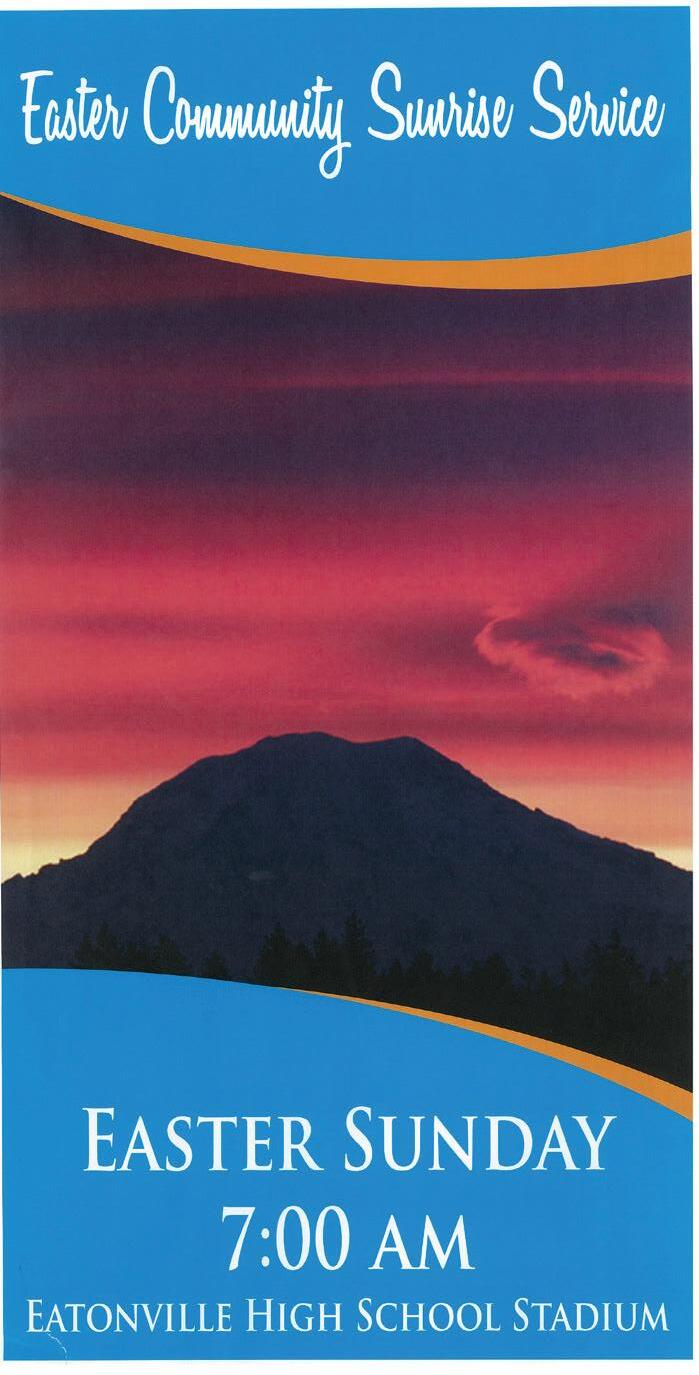
Eatonville United Methodist Church
A Spiritual Base Camp On The Way To Paradise. Mashell Avenue North P.O. Box 205 Eatonville, WA 98328 360-832-4021
Home: 360-832-4562 Pastor Bernard Preston Ritchea Cell: 361-330-9666
Facebook: Eatonville United Methodist Church of Washington OPEN HEARTS OPEN MINDS OPEN DOORS OPEN TABLE WORSHIP SERVICE BEGINS AT 10:30 a.m.
By Phil Bigler
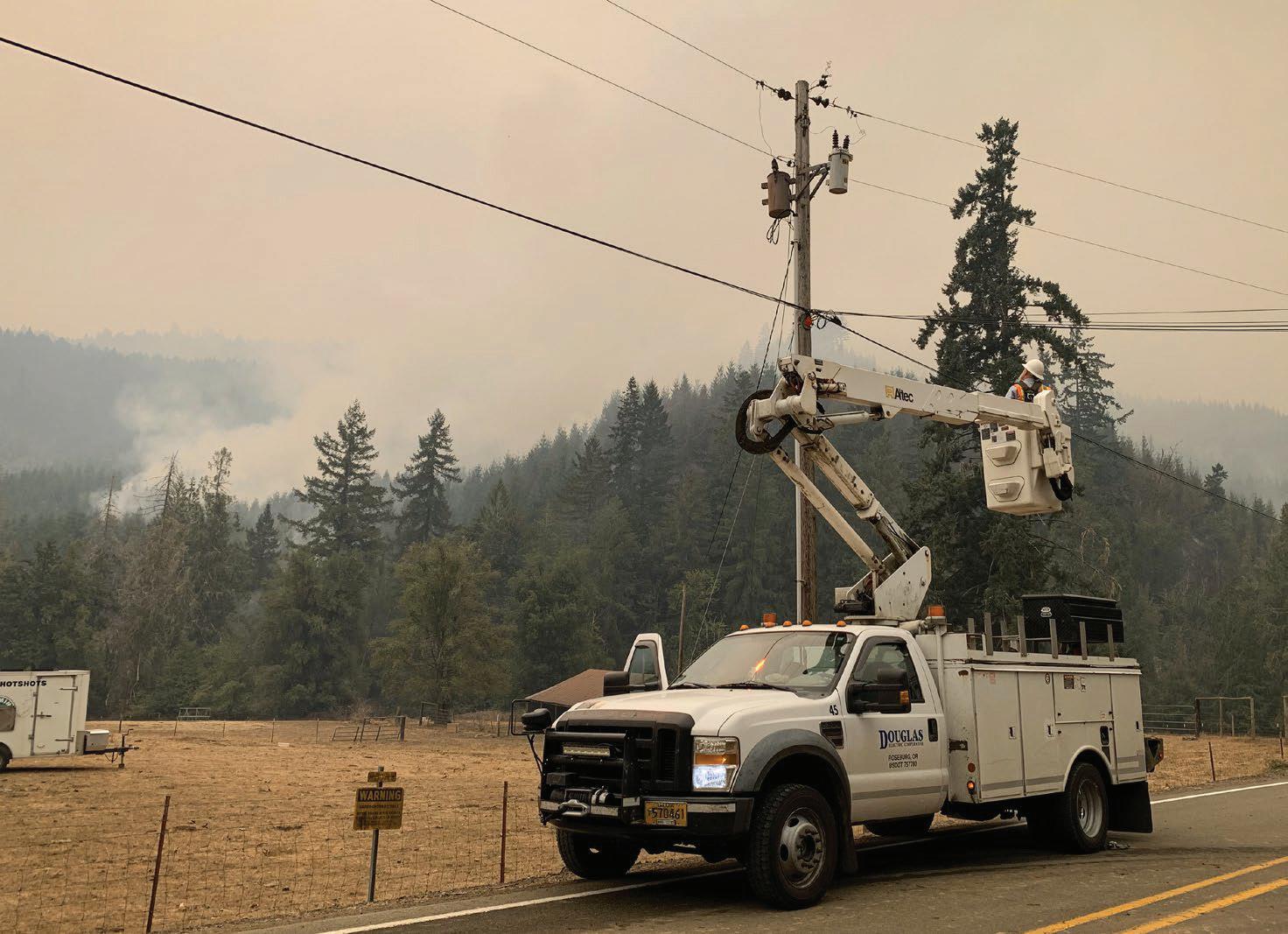
As wildfires increasingly threaten the Pacific Northwest, utilities are under mounting pressure to adopt stronger wildfire prevention measures. Douglas Electric Cooperative, which serves communities across Coos, Douglas, and Lane counties, is no exception. After experiencing several major wildfires in recent years, DEC took a significant step by creating a fire mitigation manager position to better address the growing threat. The cooperative’s decision to appoint Todd Sherwood, a 30-year veteran of the organization, to this new role highlights the importance of deep institutional knowledge and adaptability in mitigating fire risks.
The Pacific Northwest, once known for its mild fire seasons, has seen a marked increase in wildfire activity, driven by hotter, drier conditions and shifting weather patterns. For DEC, which operates 1,600 miles of overhead distribution lines in predominantly rural and forested areas, this new reality presents serious challenges. Much of DEC’s electrical infrastructure is spread across difficult terrain, vulnerable to high winds and dense vegetation that increase the potential for fires.
Recognizing the growing importance of wildfire prevention, DEC sought and secured a $9.1 million grant from the U.S. Forest Service in 2023 to support fuel reduction and wildfire mitigation projects. The funding allowed DEC to expand its vegetation management and infrastructure upgrade programs as well as become the first utility in Oregon to create a full-time position focused exclusively on wildfire mitigation.
When DEC created the fire mitigation manager position, the cooperative needed someone with extensive knowledge of its operations, infrastructure, and unique challenges. Todd, with over 30 years of experience at DEC, was the ideal candidate. Todd had worked in a variety of roles, starting as a lineworker before advancing to foreman, staking engineer, and eventually operations superintendent. His comprehensive understanding of DEC’s transmission and distribution systems made him uniquely qualified to lead the cooperative’s fire mitigation efforts.
According to DEC General Manager Keith Brooks, Todd’s broad technical knowledge and hands-on experience were invaluable assets in tackling wildfire risks.
“He’s seen almost every instance of what the system can do and what it can’t,” Brooks said, emphasizing the importance of leveraging Todd’s institutional knowledge before he retires.
Todd’s ability to understand the system’s strengths and vulnerabilities under various conditions gives him critical insights into wildfire prevention that few others possess. Todd’s openness to new technology also made him a natural fit for the role. Modern fire mitigation heavily relies on tools such as drones, fault-current indicators, and advanced monitoring systems. Todd’s readiness to embrace these technologies helped DEC integrate them effectively into its wildfire prevention program.
Stepping into the fire mitigation manager role has given Todd a new challenge— one he finds both exciting and essential. His primary mission is clear: to identify and eliminate ignition sources before they can spark wildfires. This involves close oversight of DEC’s rights of way and ongoing fire mitigation projects.
Todd oversees a dedicated crew tasked with clearing vegetation around power lines to minimize fire risks. Given DEC’s largely rural and forested service area, managing brush, branches, and trees around power lines is essential for wildfire prevention. Todd’s team ensures these hazards are reduced, particularly in the aftermath of storms, when falling trees can cause outages and spark fires. He also manages the cooperative’s drone inspection program, which enables fast and efficient inspection of remote and hard-to-reach areas.
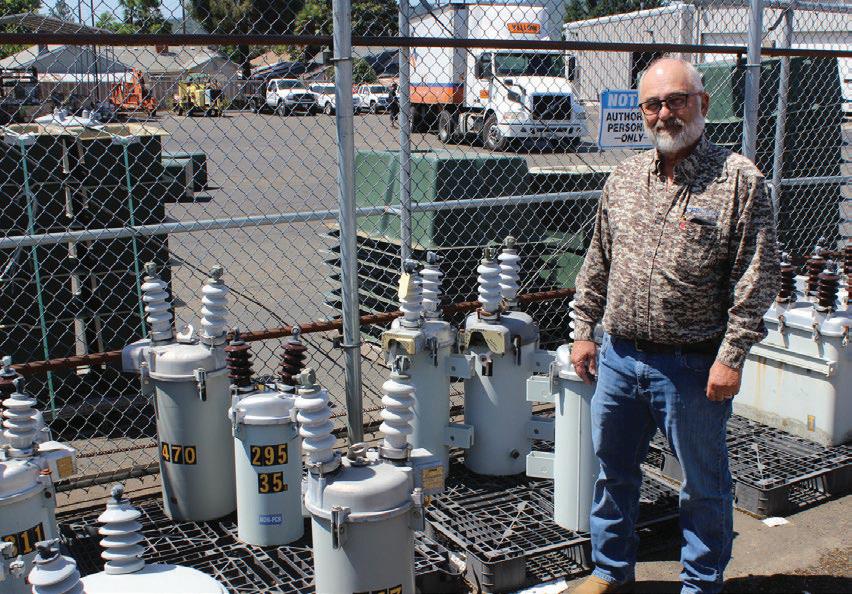
A major project under Todd’s leadership is the replacement of 3,000 expulsion fuses with current-limiting fuses, which are filled with spark-stopping sand to reduce fire risk. Additional infrastructure upgrades include replacing oil reclosers with electronic vacuum reclosers and installing insulated overhead conductors and fault-current indicators. These changes are part of a multiyear effort to make DEC’s grid more resilient to wildfires.
Todd’s responsibilities go beyond technical upgrades. He is also tasked with integrating DEC’s wildfire mitigation plan with broader community safety efforts. This involves collaborating with local fire agencies, state forestry departments, and county emergency management teams to ensure DEC’s strategies align with regional wildfire prevention initiatives.
In addition, Todd plays a vital role in educating DEC members about fire safety. He frequently reminds residents to create defensible space around their homes and have backup plans in case of power outages. In some cases, DEC has needed to shut off power to prevent wildfires, such as during the 2020 Archie Creek Fire, when power was cut to 200 members near Mount Scott to eliminate the risk of utility lines starting another fire. Todd’s guidance ensures these power cuts, while sometimes necessary, are handled as efficiently and safely as possible.
During the 2023 Tyee Ridge Complex fire, Todd played a crucial role in coordinating daily with the incident command team to support nearly 500 firefighters battling 10 wildfires spread across almost 8,000 acres. His efforts included managing DEC crews responsible for de-energizing and lowering power lines to provide safe access for firefighting teams, while also ensuring power to essential water sources and wells remained on for as long as possible. Todd also partnered with right-of-way trimming crews to remove dangerous trees that could threaten the safety of those fighting the fires.
Rather than de-energizing all power lines in the affected areas, as would typically happen, Todd worked closely with the incident command team to take a more strategic, granular approach to
power shutoffs. This tailored response, made possible by Todd’s active involvement, helped maintain critical power where needed while still prioritizing safety for the firefighting teams and the community.
Todd’s extensive experience enables him to anticipate potential risks and address them before they escalate. His work as fire mitigation manager strengthens DEC’s fire prevention capabilities while enhancing the cooperative’s relationship with the communities it serves. By overseeing equipment upgrades, managing vegetation, and collaborating with external partners, Todd ensures DEC is proactive in its approach to fire mitigation.
The creation of the fire mitigation manager position at Douglas Electric Cooperative was driven by the urgent need to address the increasing wildfire risk in the Pacific Northwest. In appointing Todd to this critical role, DEC recognized the immense value of his decades of experience, deep understanding of the cooperative’s infrastructure, and willingness to embrace new technologies.
Todd’s leadership is pivotal to DEC’s efforts to proactively manage wildfire risks, improve the resilience of its infrastructure, and protect the communities it serves. His expertise and forward-thinking approach to wildfire prevention underscore the importance of having a dedicated, experienced leader at the helm during a time of growing fire risk. As fire seasons become longer and more severe, utilities like DEC will continue to rely on individuals like Todd to ensure their systems remain safe, reliable, and capable of withstanding future challenges.
Phil Bigler is the chief operating officer at Douglas Electric Cooperative. He can be contacted at phil.bigler@dec.coop or (541) 673-6616 ext. 230.
On a hot July day, Wren Zielinski took her turkey, Mr. T, to the Linn County Fair in Albany, Oregon. Wren raised the turkey from a tiny 1-day-old poult in the spring until he was a full-grown tom ready for the summer fair.
As the two enjoyed the cool breeze from nearby fans, Wren’s mom, Katie, took a photo of them.
“I’m not sure what she was thinking at that moment or what Mr. T was thinking either, but they seemed so content,” Katie says. To submit your photo, email a JPEG file to photos@pioneer. coop. Include “Before You Go” in the subject line. Please share a bit about what inspired you to make your photo. n

Make Your Driveway Like New with a DR® Power Grader
• Fill in potholes and smooth out washboards
• Loosen and redistribute existing material

and Clear Out










• Chip and shred with power to spare









• Tow with your ATV, UTV, or tractor


• Annihilate thick branches and reduce yard waste





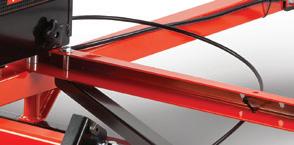
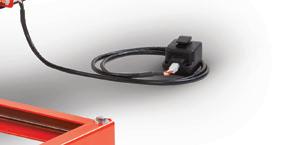
• Easy to move easy to use—large wheels and easy towing











• Built USA tough

















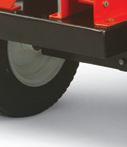
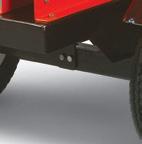


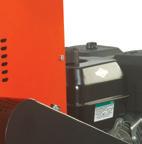

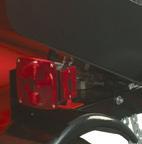




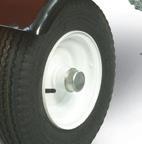


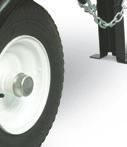






































































































Discover all 13 of our Recipe Contest cookbooks. Each is 8½-by-11” with index. Prices shown include postage and tax.
Please allow two - three weeks for delivery; include your email address if you would like a shipping confirmation.











Douglas Electric Cooperative Inc.
1981 NE Stephens St.
Roseburg, Oregon
Phone 541-673-6616
800-233-2733
Outage 888-420-8826
Officers
President | Robert Poage
Vice President | Bill Jackson
Secretary | Shirley Cairns
Treasurer | Suzi Armstrong
Director | Evan Barnes
Director | David House
Director | Terry Nelson
General Manager
Keith Brooks
Chief Operating Officer
Phil Bigler
Director of Operations
Shawn Filice
Office Manager/CFO
Bill Reinhart
Fire Mitigation Manager
Todd Sherwood
Mission Statement
Douglas Electric Cooperative’s mission is to safely provide affordable, reliable electric and related services that improve our members’ quality of life.
49875

Dear Member,
The 83rd Oregon Legislative Assembly is nearly halfway through its busy session. Thousands of bills have been introduced, and it can be difficult to cut through the chatter.
At Douglas Electric Cooperative, we believe going to the Oregon Capitol is an important way to make sure our voices are heard. In February, more than 60 electric cooperative leaders from across Oregon—including me and board member Suzi Armstrong—spent a day in Salem advocating for policies to safeguard the affordability, reliability and safety of your power supply.
Whether it is legislation to protect electric co-ops from uncapped liability from wildfires or mandates on how to operate our system or even the types of vehicles we can buy, the Oregon Legislature is considering serious proposals that would have real consequences for our members.
It was a productive day with a good discussion of the issues, and we appreciate the attentiveness of our elected officials. We also found considerable interest from legislators in the electric co-op business model—perhaps more than ever before.
In an era of spiraling costs, legislators said they appreciate we are local and not-for-profit. While we are not immune to rising costs, decisions about the operation of Douglas Electric are made by elected leaders in our communities, not distant shareholders seeking to maximize profits. You have a voice in making these decisions, and lawmakers seem to recognize this distinction. In the Oregon Capitol, there is a growing recognition that electric co-ops are different.
Advocating on your behalf in Salem is a responsibility we take seriously—and the Oregon Legislative Assembly still has a long way to go. We will see it through to the end and keep you updated on any legislation that affects Douglas Electric’s ability to provide our members with the best possible service.
Sincerely,
General Manager Keith Brooks
